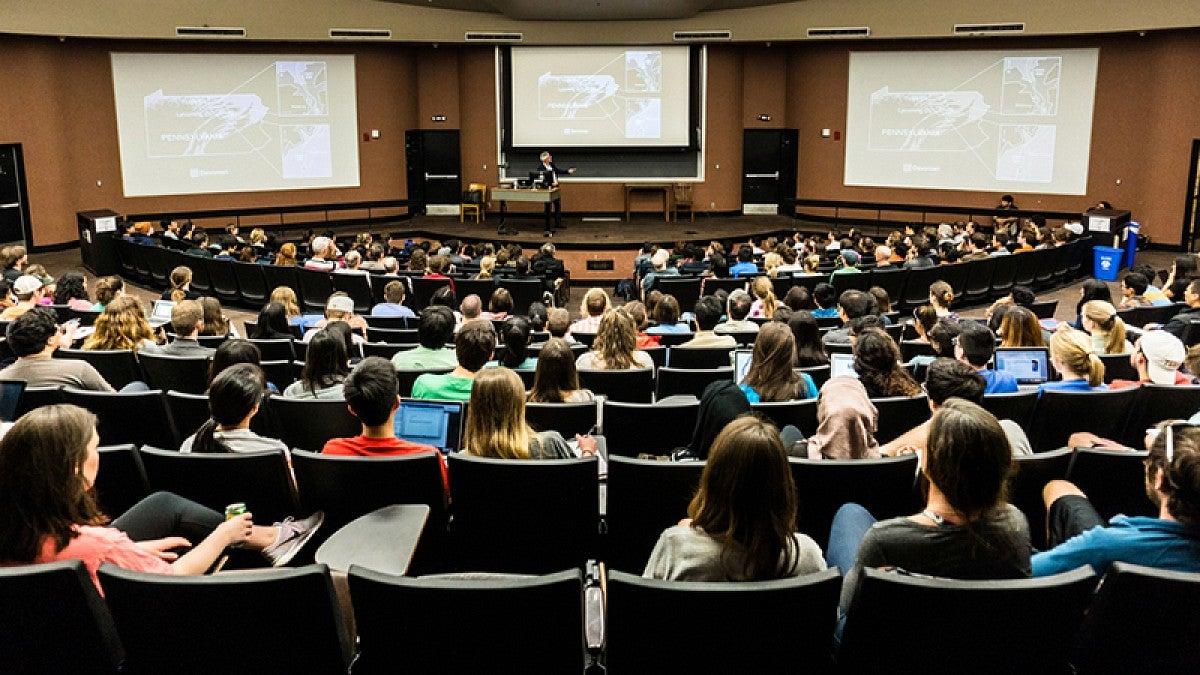
The conservative right has been on a crusade to purge the teaching of critical race theory and aspects of U.S. history that reflect negatively on the country’s past and, hence, might encourage critical thinking about the present.
Most academic historians teaching in the Ivy League and at other institutions of higher education are indeed liberals who in recent decades have done a great deal to illuminate the evils of slavery, Native-American genocide and historical pattern of racism and sexism in U.S. society.
However, the conservative characterization of the history profession as being dominated by Marxists is unequivocally false.
Most history professors are in fact mainstream anti-Trump liberals who support the Democratic Party. If they are not for Joe Biden, Hillary Clinton and Kamala Harris, they are for Bernie Sanders, AOC and the “Squad.”
Many in the profession have succumbed to identity politics by prioritizing the teaching of racial and gender inequalities in U.S. history while obfuscating the class-based nature of the U.S. political structure and society.
Furthermore, academic historians who have gained status in the profession continue to distort pivotal aspects of U.S. history and to miseducate students in a variety of important ways.
Especially egregious is a failure to elucidate on the political-economic dimensions underlying U.S. imperialism and devastating human cost of the U.S. empire.
While the field of Native-American Studies has produced many important critical works, few of those works link the pacification of the Native Americans with contemporary practices of U.S. foreign policy.[1]
The prevalence of false flags in American history as a pretext for wars dating from the 19th century through the present is taboo and anyone who broaches this topic is usually blacklisted: either denied tenure or not offered permanent teaching positions.
The same is true of anyone probing the CIA’s history of drug trafficking and terrorist activity, such as Iran-Contra and the Phoenix Program, and conspiracies behind the assassinations of JFK, RFK, MLK and others in U.S. history.
Anti-war groups, including the 1930s America First Committee, continue to be presented by many historians in a negative light and a historical revisionism has taken root that presents America’s South Vietnamese allies as honorable.
The Soviet Union continues also to be demonized and blamed for the origins of the Cold War, while Henry Wallace, Roosevelt’s vice president in his third term, who tried to prevent the Cold War, is presented by many professors as a communist dupe.
While studies abound criticizing the conservative right and its pernicious impact, studies that critically scrutinize recent Democratic Party leaders and their depravity are marginalized, never being assigned.[2]
In addition to this, when covering U.S. elections, academic historians rarely address the funding structure that excludes left-wing progressive candidates who seek to redistribute national wealth and end the permanent warfare state.
A neglected study in covering U.S. political history is Ferdinand Lundberg’s book, America’s 60 Families, which is rarely if ever assigned in any syllabus.
This book discusses in great detail how the dominant political figures of the 19th and early 20th century were in the pocket of wealthy businessmen and bankers who could shape public policy in their interest.
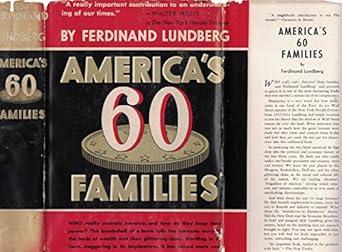
Related to this is the fact that left-wing leaders and movements were conventionally portrayed very negatively by U.S. historians.
The Populist Party, for example, which railed against Wall Street and demanded greater regulation of the economy and a progressive taxation system, was depicted as being led by ignorant and prejudiced farmers. [3]
The Socialist and Communist parties are also rarely given credit for affecting positive social change in American history texts.[4]
To elaborate on many of the above points, here are some key topics about which students are frequently being miseducated on today’s college campuses:
Alger Hiss Spy Case
Alger Hiss was a State Department employee in the Roosevelt administration in the 1940s who was accused of being a communist spy and convicted on perjury charges. His case was so important because it was used by conservatives to undermine the New Deal and cooperative policy Franklin D. Roosevelt had adopted toward the Soviet Union under the claim that Roosevelt’s State Department had been infiltrated by Soviet spies.
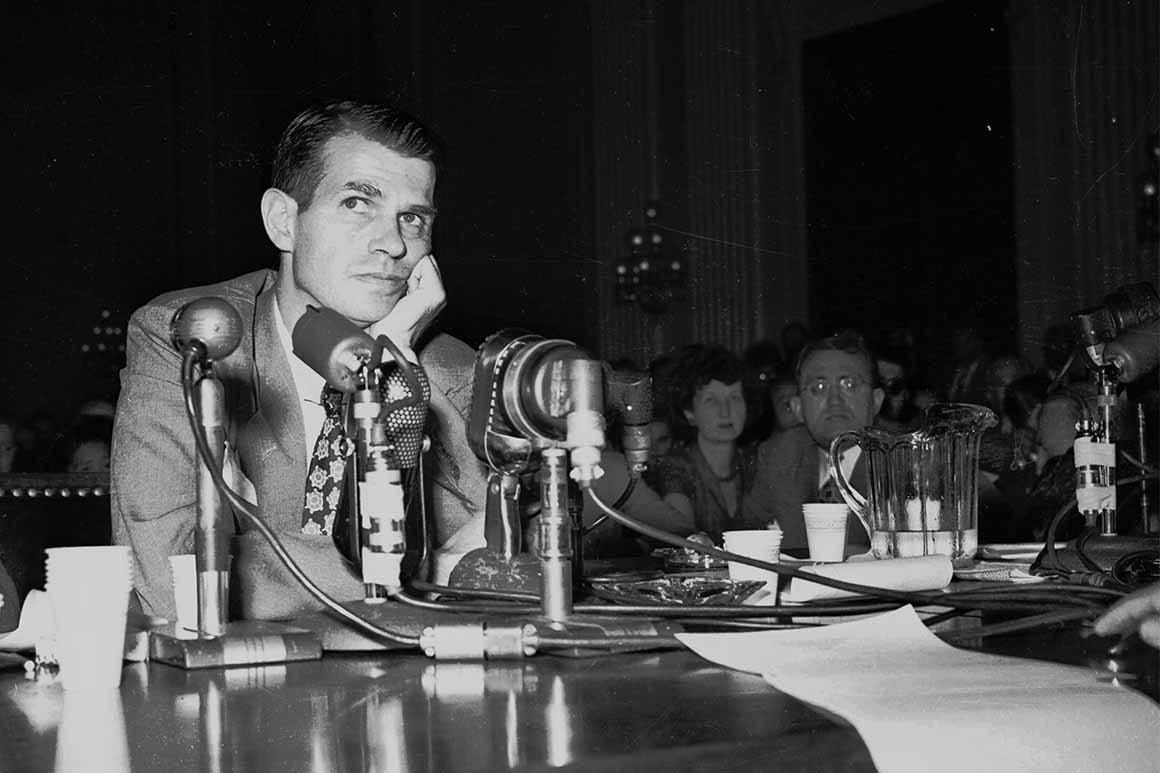
Professional historians continue to promote the canard that Hiss was a communist spy when no evidence has ever emerged that he was. They claim that National Security Agency (NSA) Venona documents released after the collapse of the Soviet Union and other documents found in KGB archives prove that Hiss was a spy.
Those documents in fact do no such thing. There is a reference to an alleged KGB asset named ALES, but investigators found he could not have been Hiss because ALES was in Mexico at a time that Hiss was in Washington, D.C.
Of added significance is the fact that ALES never compromised American national security.
The documents that Hiss allegedly provided to the Soviets—those which Whittaker Chambers said he stored in a pumpkin patch on his farm and gave to Richard Nixon—were mundane documents.
When journalist Jeff Kisseloff published a study this year based on 50 years of research showing Hiss to have been innocent, he was viciously attacked by Harvey Klehr, a professor of politics and history at Emory University, who accused Kisseloff of being a “conspiracy theorist” and asked why a university press would publish Kisseloff’s “work of delusional madness as a nonfiction book.”[5]
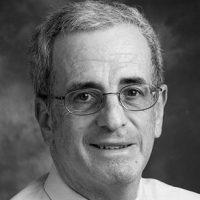

As if anticipating Klehr’s response, Kisseloff wrote in his book that “more than seventy years after Hiss’s conviction, the knives are still out for him. Do a search on X for ‘Alger Hiss’ and feel the vituperation toward him jump off your computer screen. Visit the historians online gathering place, H-HUAC, the H-Net network for historians of American Communism, enter ‘Alger Hiss’ into the search and read the posts of supposedly civil educators behaving online like professional wrestlers. All too frequently, those whose views stray from the orthodoxy are subject to personal attacks while the actual merit of their work is less important.”[6]
JFK Assassination
Following the release of a new batch of JFK assassination documents by the Trump administration, Harvard history professor Fredrik Logevall was quoted in The New York Times stating his doubts that the new documents would “overturn our understanding of what happened on that terrible day in Dallas” where, as he believes, Lee Harvey Oswald, acting alone, killed JFK.
Logevall told the Times that “here’s something comforting about conspiracies. We want to believe, as human beings, that great events have great causes.”

Logevall’s remarks reflect on his function as a gatekeeper who uses his status as a Harvard professor to place himself at the vanguard of all information and to dismiss those researchers who have probed deeply into the facts of the JFK assassination and found that Oswald was set up as a patsy.
The evidence for the latter is overwhelming, as has been discussed in a previous CovertAction Magazine article.
That Oswald was not the actual shooter is at least in doubt, as witnesses identified him as being on the second floor of the Texas School Book Depository five minutes before JFK was shot and less than two minutes after he was shot—calmly drinking a coke.
The forensic evidence makes clear that there were many more bullets than those fired from the Texas School Book Depository and that the shots that killed Kennedy came from the grassy knoll.
Many books have been written exposing all facets of the conspiracy behind JFK’s assassination, including the prominent role played by the CIA and Vice President Lyndon B. Johnson and a circle of wealthy Texas oil men supporting him.
But these books are never assigned in college syllabi and are dismissed by Logevall and other gatekeepers in the profession who continue to advance the patently false “lone nut” conspiracy theory.[7]
MLK Assassination
Similar to the JFK assassination is the historical profession’s cover-up of the FBI’s role in the assassination of Martin Luther King, Jr.
The FBI’s coordination of King’s murder was exposed in a trilogy of books written by William F. Pepper, the King family lawyer.
He interviewed key witnesses, including Russell Adkins III, the son of Russell Adkins, Jr., of the Dixie mafia, who helped plan King’s assassination with Clyde Tolson, FBI Director J. Edgar Hoover’s top deputy and lover, whom Adkins III called “Uncle Clyde.”
A teenager at the time who had sat in on his first lynching at age six, Adkins III witnessed Tolson carrying bags of cash for Hoover and said that he used to sit in on meetings among his father, Tolson and other members of the Dixie mafia, where he was privy to intricate details about the King assassination plot.[8]
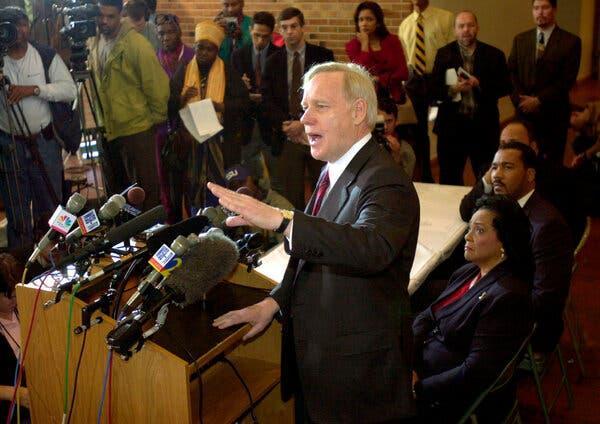
Those details included:
- Tolson paying the warden of the Jefferson City, Missouri, prison to facilitate the escape of James Earl Ray, who was identified as a patsy after having been psychologically profiled. Ray was put in a position of dependence on handlers who helped him escape and told him exactly where to go and what to do as they set him up as a fall guy.
- King was lured to Memphis after the murder of two Memphis city sanitation workers, who were killed to create a pretext for a strike.
- An informant within King’s inner circle (likely Jesse Jackson) made sure that King was put in a hotel room next to the balcony where he could be shot.
- Memphis Police Chief Frank Holloman, who had served under Hoover with the FBI, was a key figure in plotting the murder and ensuring that it went off.
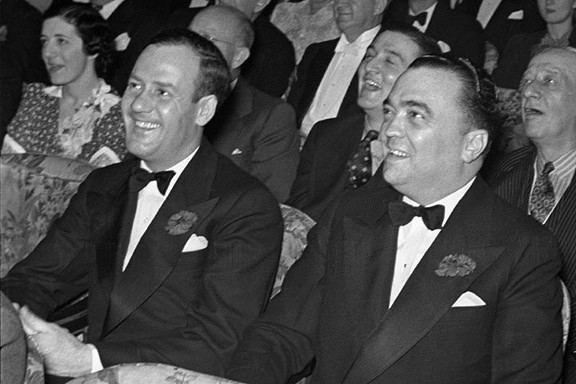
In a Pulitzer Prize-winning biography of J. Edgar Hoover, Yale Professor Beverly Gage, amazingly, cites one of Pepper’s books in the bibliography but omits any discussion of the content of this or other of Pepper’s books, and does not suggest that Hoover and Tolson had helped plot King’s assassination.[9]
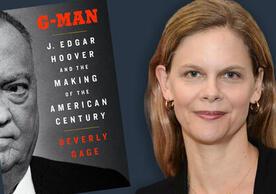
This is characteristic of the history profession, which celebrates King’s career though fails to inform students about the government agents who were behind his murder and those of other members of his family too.[10]
Lone-Wolf Gunmen Myth
Political assassinations are poorly investigated and covered by academic historians in general. Most advance the mythology of lone-wolf gunmen who are said to be psychologically deranged. This latter perception helps reinforce the myth of American exceptionalism and belief that political change in America occurs peacefully and not through violence (until Donald Trump came along, that is, according to their interpretation).[11]
During an executive session of the Warren Commission, before it began its “investigation” into the JFK assassination, former CIA Director Allen Dulles distributed paperback copies of a book by Robert J. Donovan called The Assassins, which contrasted assassinations in the U.S. carried out by social outcasts with coordinated conspiracies that took place routinely in medieval Europe, Nazi Germany, Stalinist USSR, and pre-war Japan.
Political assassinations in those contexts were “a weapon in the struggle for political power” and “calculated means of making the armed forces all powerful and eliminating pacifist elements from the government.” However, according to Donovan, “the assassination and attempted assassination of American presidents followed none of these historical patterns. They involved neither organized attempts to shift political power from one group to another, nor to perpetuate a particular man or party in office, nor to alter the policy of the government, nor to resolve ideological conflict.”[12]
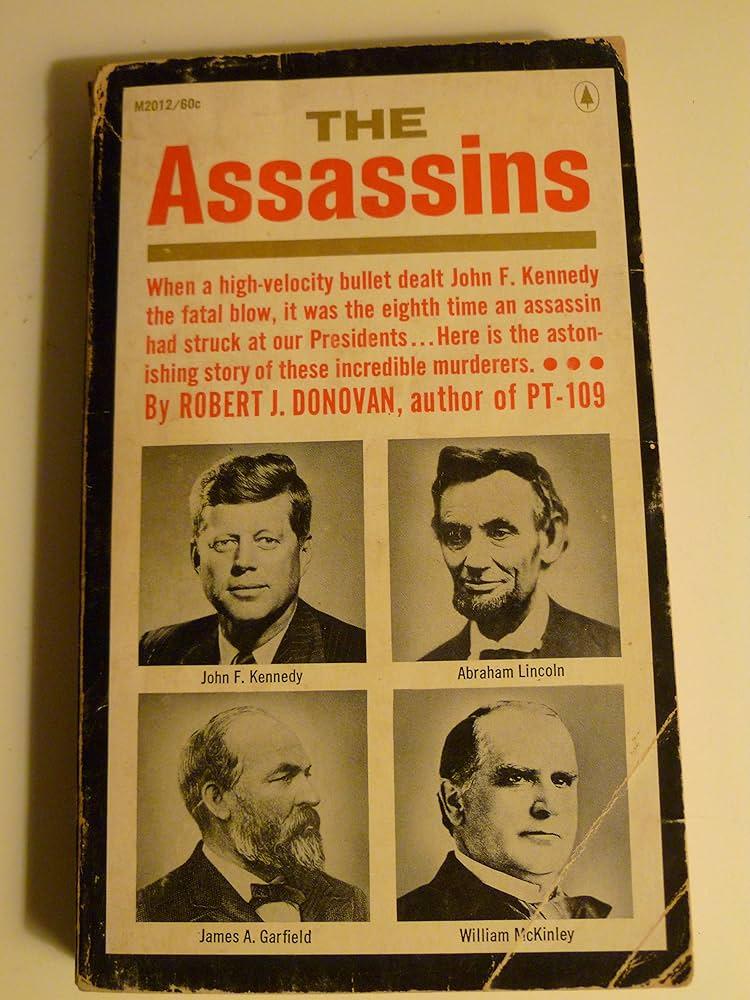
This latter conclusion—embraced by today’s academic historians—is patently false, ignoring scholarship and evidence that is accessible to the reading public.[13]
Unfortunately, it is what students are being taught—which may be a reason that history majors are on the sharp decline.
Pearl Harbor
Probably all academic historians today dismiss as conspiracy theory the idea that FDR knew in advance of the Pearl Harbor attack but did nothing to stop it.[14] One reason may be that they do not want to give credence to a theory that was advanced predominantly in the past by anti-Roosevelt conservatives. Even New Left historian Howard Zinn in his epic A People’s History of the United States characterized as “wild” the accusation that “Roosevelt knew about Pearl Harbor and didn’t tell, or deliberately provoked the Pearl Harbor raid.”[15]
The historical evidence is overwhelming that top members of Roosevelt’s administration in fact knew about Pearl Harbor in advance and that the attack was deliberately provoked. A 2023 article I wrote in CovertAction Magazine titled “Eighty Years of Lies” summarizes many of the key facts. I discuss at the beginning how the Roosevelt administration had provoked Japan by engaging in a naval buildup in the South Pacific, by allowing U.S. pilots to fly Guomindang aircraft against Japanese troops in China, and by enacting an oil embargo, which crippled Japan’s economy and threatened its access to vital raw materials in Manchuria.[16]
The article goes on to detail how U.S. Navy cryptanalysts had cracked the Japanese diplomatic and military codes and were hence privy to communications about the Pearl Harbor attacks in advance. After getting word about the attacks early in the morning, Army Chief of Staff George C. Marshall inexplicably failed to send the information to naval commanders in Hawaii via scrambler phone, instead sending it via regular courier which arrived there the next day. The final section of the article deals with the Pearl Harbor cover-up and corruption of the Roberts Commission set up by Roosevelt, which foreshadowed the Warren and 9/11 commissions.[17]

This history is not properly covered in the overwhelming majority of college classes today with liberal professors functioning as gatekeepers safeguarding the official narrative that helps preserve the myth of World War II as a good or righteous war.
Henry Wallace
Henry Wallace was Roosevelt’s vice president who was poised to succeed him as president before being ousted in a coup at the 1944 Democratic Party National Convention. The coup empowered a back-bench senator, Harry S. Truman, who went on to drop the atomic bomb and adopted a hard-line policy against the Soviets, resulting in the Cold War. In 1948, Wallace ran as an independent on a peace platform. He had wanted to continue Roosevelt’s cooperative policies with the Soviet Union and pledged a new “Century of the Common Man” free of imperialism of any kind.[18]

When Peter Kuznick and Oliver Stone published a book praising Wallace and detailing how he was ousted in a Democratic Party coup (The Untold History of the United States), Sean Wilentz, George Henry Davis Professor of American History at Princeton University, wrote a damning review in The New York Review of Books. Wilentz claimed that it was Wallace’s supporters who tried to hijack the 1944 Democratic Party Convention when, in fact, Wallace had the support of 65% of the delegates.
In 2014, Thomas W. Devine, a professor of history at California State University, Northridge, published a book—which, predictably, won a Harry S. Truman Book Award—claiming that Wallace’s 1948 independent presidential campaign was dominated by communists and that at least one of his top supporters was a Soviet agent.
Wallace is portrayed in Devine’s book as naïve to the evil machinations of the Soviet Union and a man intent on compromising American national security interests. The popular front alliance between Rooseveltian New Dealers and socialists and communists is in turn depicted as having made the U.S. susceptible to Soviet penetration.
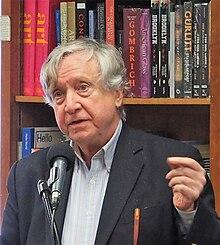
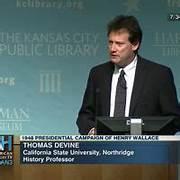
The Cold War
The Cold War field was traditionally divided between orthodox historians who promote the view that Joseph Stalin and the Soviet Union were responsible for triggering the Cold War and that the U.S was morally justified in containing them, and revisionists who provided a more critical analysis of U.S. foreign policy. Recently, there has been a wave of post-revisionism that basically provides more in-depth research to validate the orthodox perspective.
The standard bearer of this new post-revisionism is John L. Gaddis, the Robert A. Lovett Professor of Military and Naval History at Yale University, who has groomed a number of protégés to help guide the field of U.S. foreign relations history.[19] Gaddis wrote a history of the Cold War that was endorsed by Henry Kissinger. Characterized as a “carefully crafted defense of U.S. policy and policymakers,” the book presents the Soviet Union the way Ronald Reagan saw it—as an “evil empire”—and heavily sanitizes the history of U.S. military and covert interventions, making them seem to be well-intentioned and largely successful.
Gaddis’s protégés include Hal Brands, the Henry A. Kissinger Distinguished Professor of Global Affairs at the School of Advanced International Studies at Johns Hopkins University, whose Ph.D. dissertation depicted U.S. foreign policy intervention in Latin America as being undertaken in response to Soviet and Cuban interventions and ignored U.S. corporate penetration of Latin America.[20] One of Brands’ books presents post-Cold War military interventions as humanitarian missions.[21] Brands is frequently featured as an expert in the mainstream media warning about the China “threat.”


Norman Naimark is the Robert & Florence McDonnell Chair in East European Studies at Stanford University who is cited by Gaddis favorably in his Cold War history. Naimark published a book with Harvard University Press on the Soviets in Germany, which Gaddis and others use to argue that the rape of German women by Russian soldiers showed the moral depravity of the Soviet Union compared to the U.S. and West.[22]
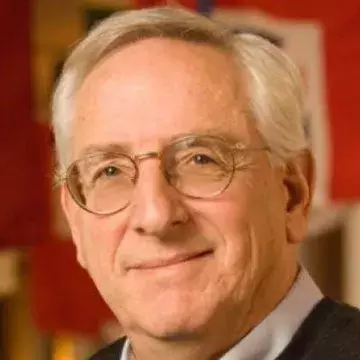
While Naimark’s book is based on good historical research, his overarching analysis overlooks the facts that a) the Soviet Union is the one to have liberated Eastern Europe from Nazi rule; b) Soviet troops had suffered unimaginable atrocities at the hands of the Nazis, which fueled desires for revenge; and c) the U.S. and UK had carried out horrific atrocities in World War II that included the fire-bombing of European and Japanese cities and the dropping of two atomic bombs over Hiroshima and Nagasaki. U.S. troops also themselves did not behave as choirboys in post-occupation Germany and Japan and were involved in all kinds of criminal activities in those countries, including rapes. (the latter was true in Okinawa and South Korea among other places too).
Naimark’s assessment, unfortunately, is influential and is used to legitimize the conduct of U.S. foreign policy in the Cold War—even when some excesses are acknowledged.
Naimark not coincidentally is a distinguished fellow at Stanford’s Hoover Institute, which was founded by ex-President Herbert Hoover to “demonstrate the evils of the doctrines of Karl Marx—whether Communism, socialism, economic materialism or atheism—thus to protect the American way of life from such ideologies, their conspiracies, and to raffirm the validity of the American system.”[23]
Naimark’s work and that of a lot of Cold War historians working today follow in this vain.
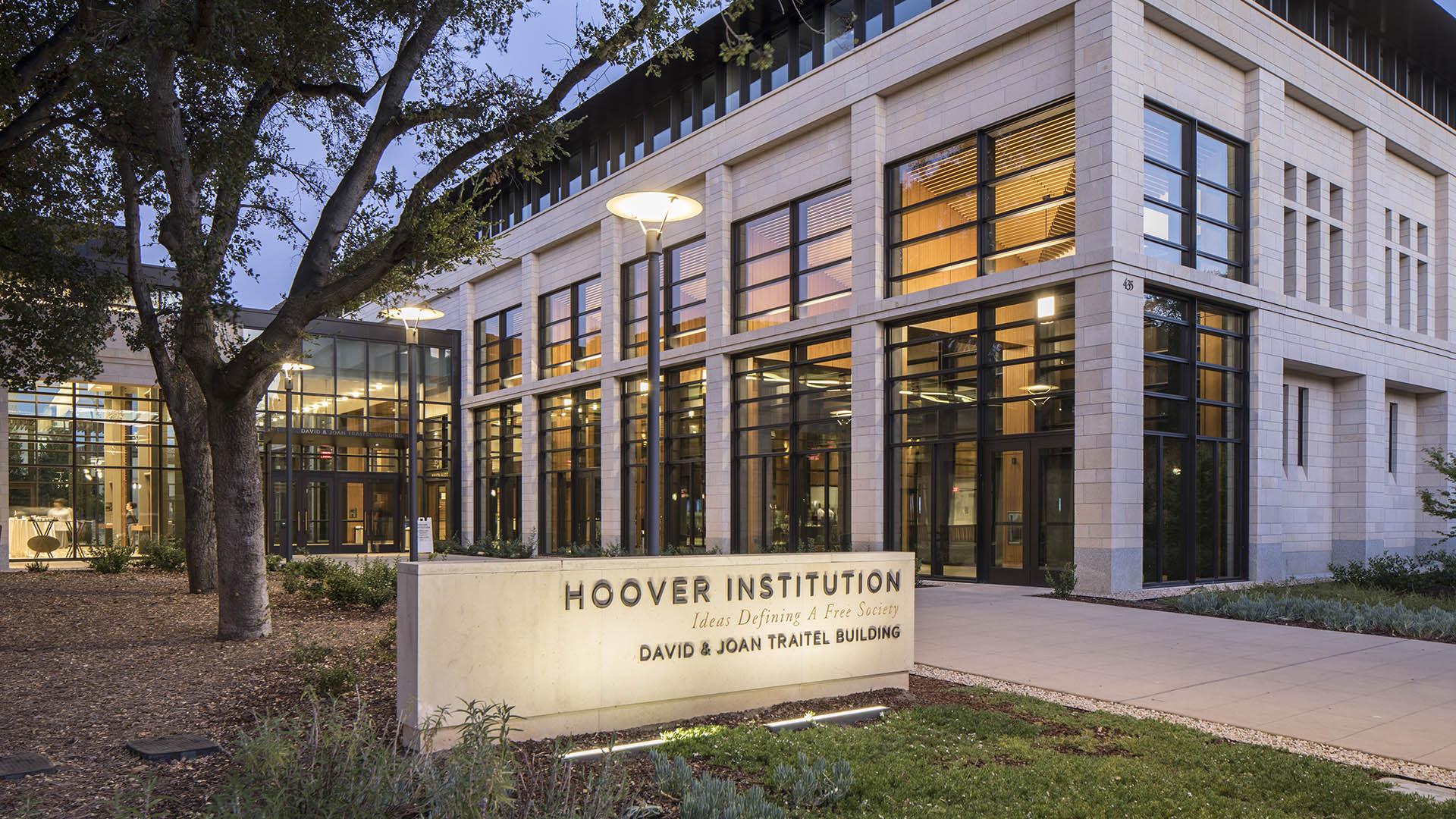
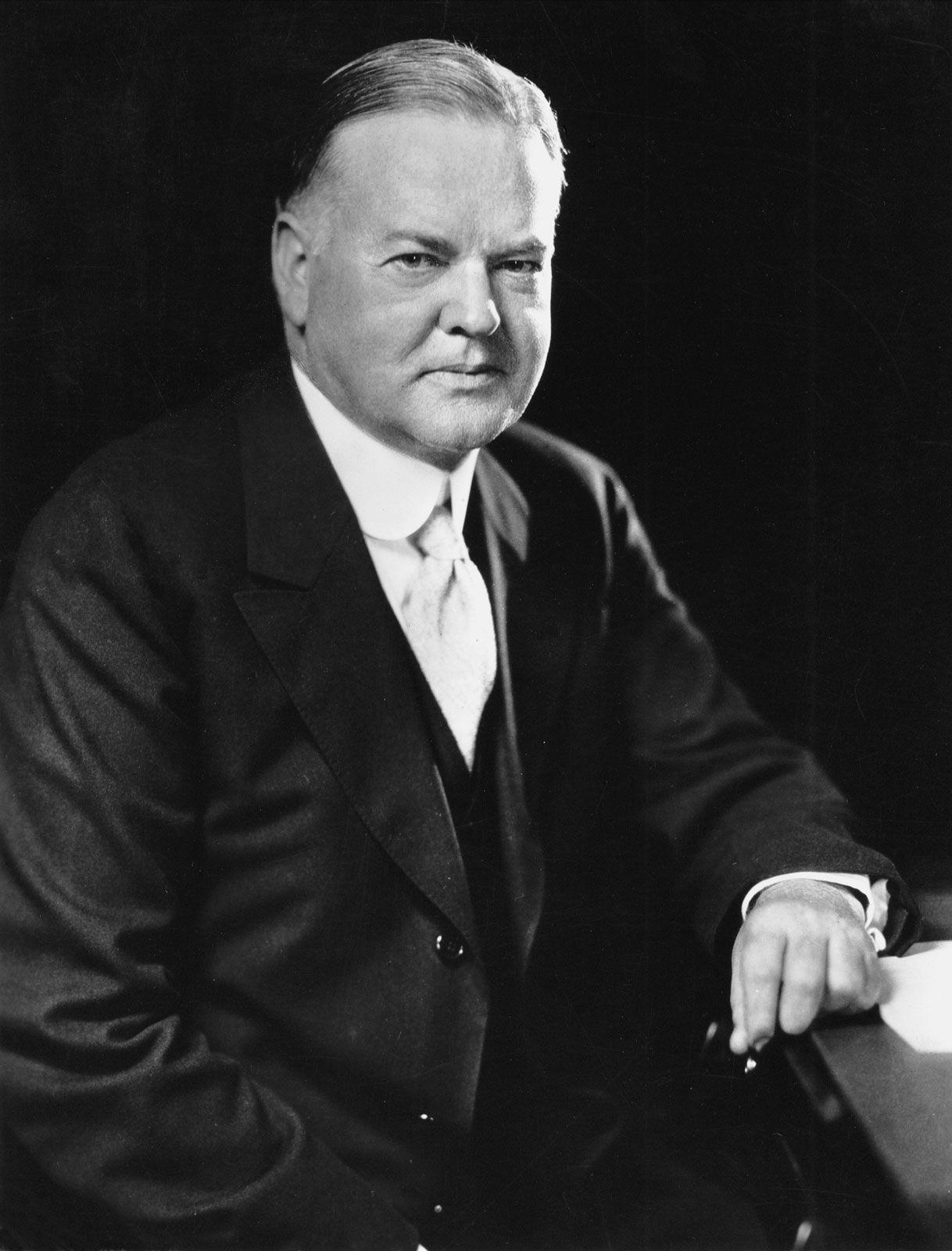
Russophobia and Further Bias
A general framework that has gained currency in the academy today is to equate Stalinism with Nazism. This is a view promoted by Timothy Snyder, a former Yale history professor who is now Chair in Modern European History at the Munk School of Global Affairs and Public Policy at the University of Toronto. Snyder’s history of the Soviet Union during the 1930s was judged by Soviet expert Grover Furr to be filled with disinformation.[24]
Among the falsehoods that Snyder presents is that Joseph Stalin deliberately starved over a million Ukraine peasants in the Holodomor famine. Credible historians determined that the Ukrainian famine was caused by environmental factors and that Stalin’s government tried to prevent it.[25]
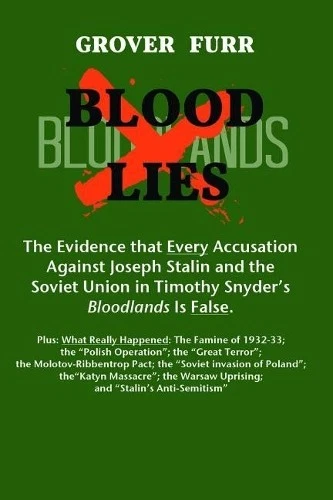

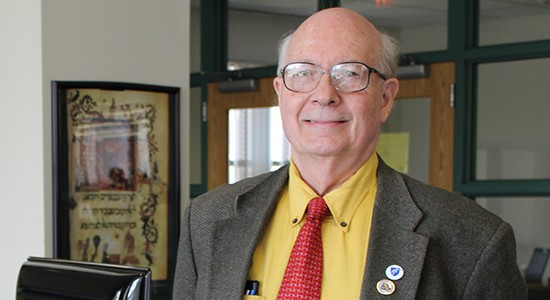
A popular account of Stalinism assigned in the past in many college courses, Robert Conquest’s The Great Terror (1968), was another work of disinformation promoted by British MI6 (intelligence agency).

The field of Soviet and Russian studies is primarily dominated by Russophobes, some with connections to U.S. intelligence, who depict Soviet Russia—and Russia today under Putin—in the darkest possible light and fail to acknowledge any of its historic achievements.[26]
The political-economic dimensions underlying U.S. foreign policy toward Russia, and the U.S.’s desire to access Russia’s rich natural resources is completely ignored.[27]
For many years, a standard-bearer of the Russian history field was Harvard historian Richard Pipes, Director of East European and Soviet Affairs for President Ronald Reagan’s National Security Council in the 1980s, whose historical writings perpetuated the narrative of the Soviet Union as the “evil empire.”[28]
Diane P. Koenker described Pipes’s book The Russian Revolution (New York: Alfred A. Knopf, 1990) in The Journal of Modern History as having a “fundamentally reactionary” perspective that presents a sympathetic view of imperial forces [in the Russian civil war] and depicted Lenin as a “single-minded, ruthless and cowardly intellectual.”
Pipes’s legacy at Harvard is being upheld today by professor Serhii Plokhii, who gave a lecture this past year for the National Endowment for Democracy (NED), a CIA offshoot, advancing the CIA’s narrative about the Ukraine-Russia War.
Plokhii presented the latter war as a conflict between David (Ukraine) and Goliath (Russia) even though Ukraine received hundreds of billions in arms from the richest countries in the world.
Additionally, he presented it as a conflict between autocracy (Russia) and democracy (Ukraine and the U.S.) even though Ukraine has banned 12 political parties, murdered dissidents, and repeatedly delayed elections, and the U.S. is a plutocracy and inverted totalitarian state, not a functioning democracy, which Plokhii left out.[29]
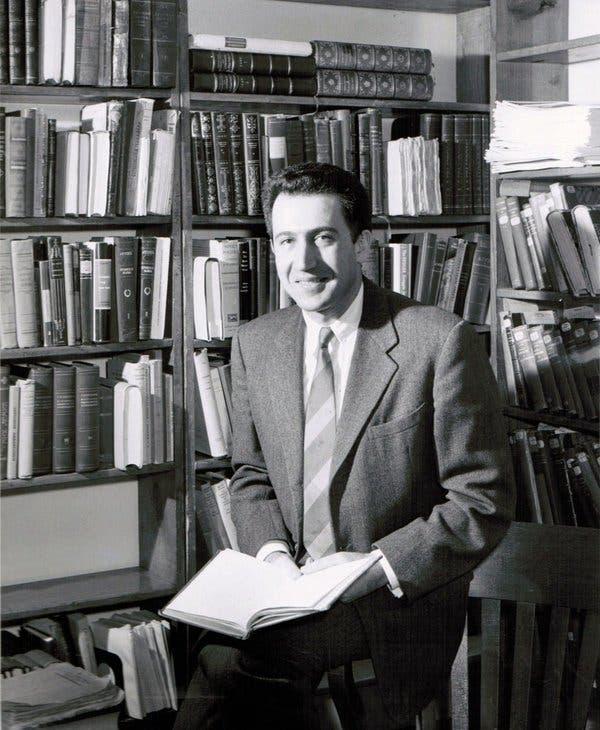
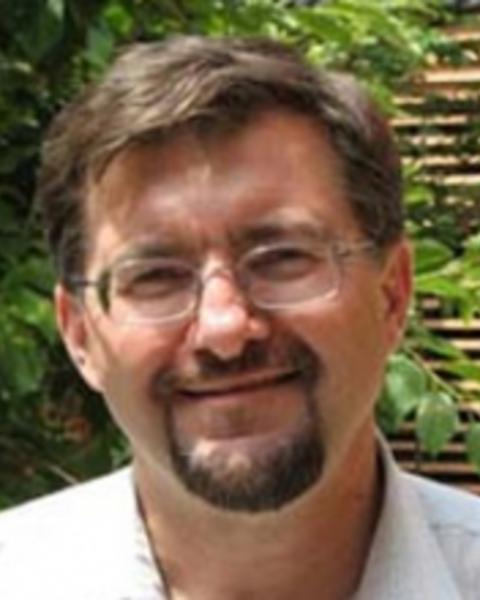
The Vietnam War
The field of Vietnam War studies has become dominated by historians who use their Vietnamese language training and access to Vietnamese archival documents to claim that South Vietnamese leaders had their own “agency” and were not dependent on the U.S.
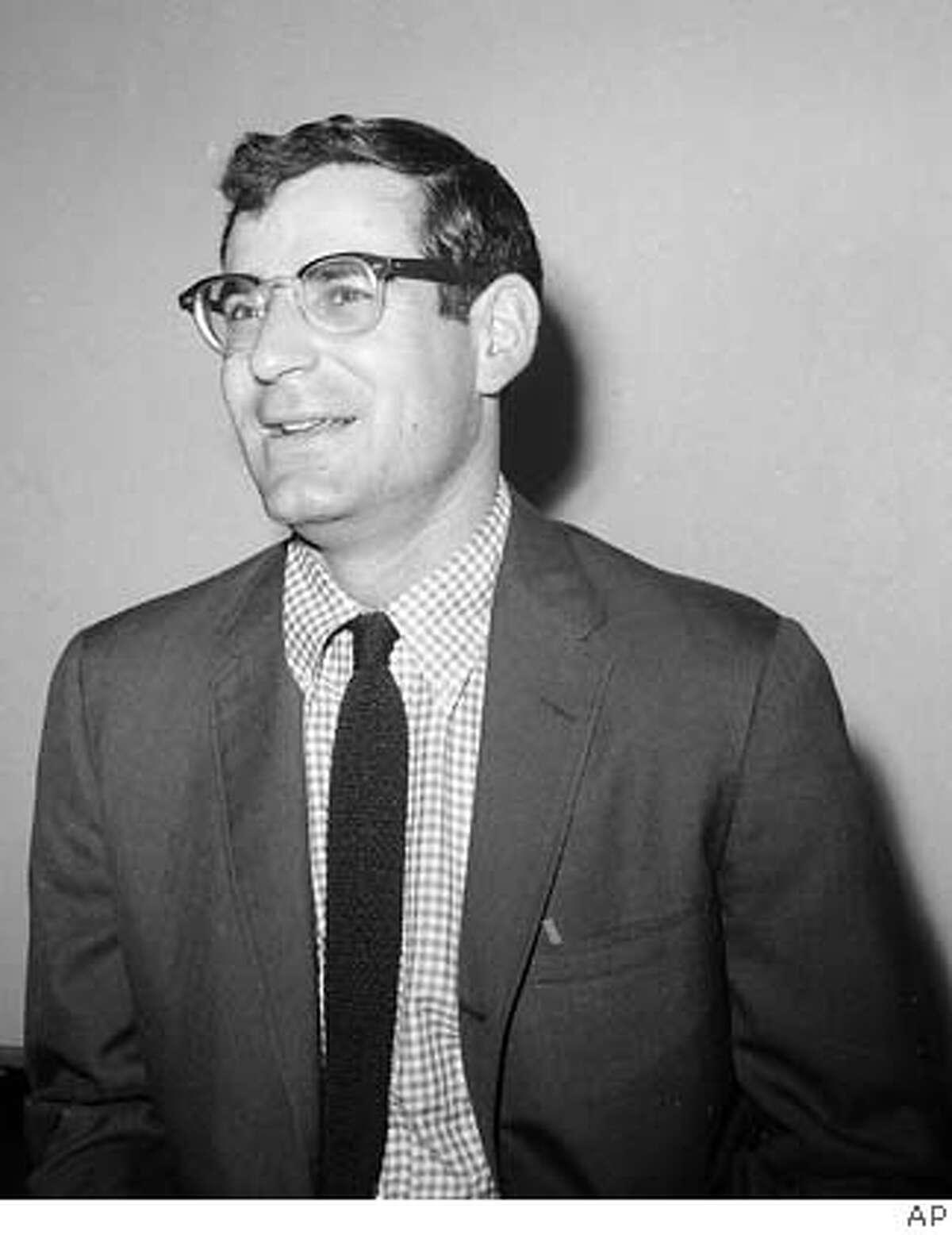
This viewpoint counters what they call the “orthodox” school of anti-war Vietnam historians which drew off the reporting of David Halberstam and other journalists of the time, who suggested that South Vietnam was a creation of the United States and an illegitimate state—which did not abide by the 1954 Geneva Conference call for elections to unify the two Vietnams.[30]
Claiming to be decolonizing the history of the war, many of the new “revisionists” suggest that Ngo Dinh Diem, the U.S.’s handpicked ruler in South Vietnam from 1954 to 1963 whose venality famously triggered Buddhist immolations, was a capable nationalistic leader who was building a stable regime until the Kennedy administration backed a coup against him.[31]
The cruelties of Diem’s regime, including systemic torture, political assassination, and Buddhist persecution are underplayed or blamed on Diem’s brother and sister-in-law, while the CIA’s role in helping to build Diem’s repressive internal security apparatus is ignored.[32]
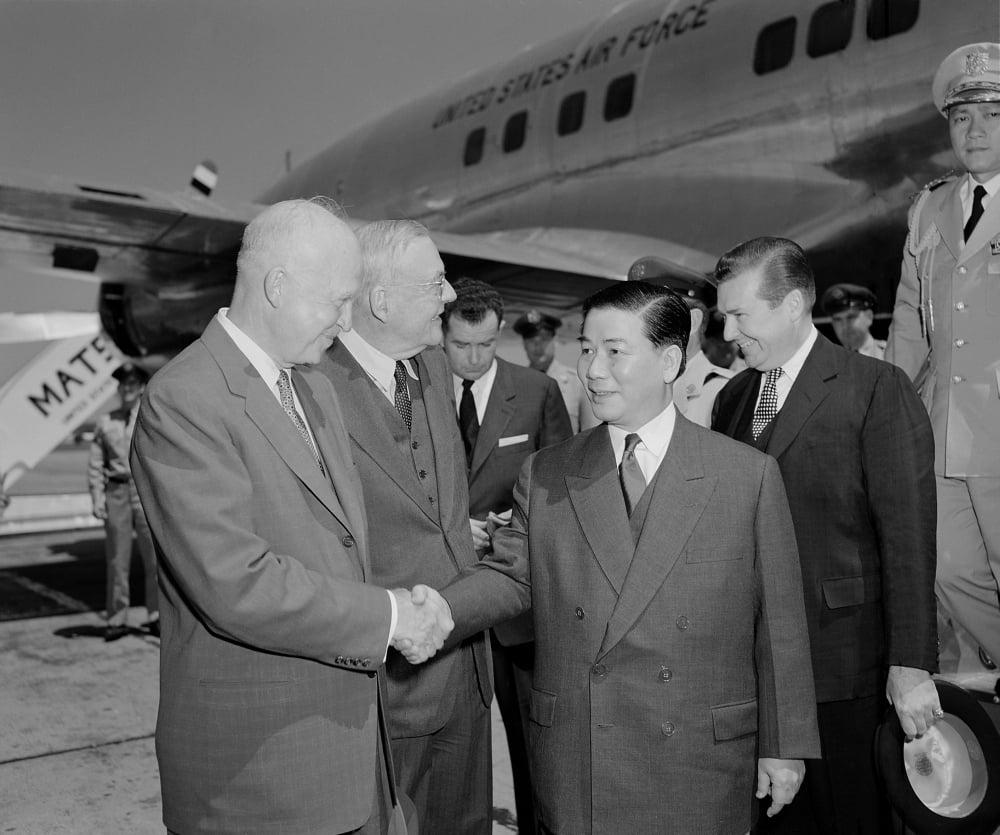
The infamous Strategic Hamlet Program by which South Vietnamese peasants were violently forced off their land into alleged model villages (which were never properly built because of theft of development aid) is branded as a success—even though the model villages were called concentration camps by the Vietnamese and the program was run by members of the “Vietcong” because it was such a great recruitment tool for them.[33]

The Vietnam War is now being presented to college students as a civil war and not a war of American aggression, as the New Left understood it.[34]
The U.S. and South Vietnam are said to have stood up against North Vietnamese and international communist aggression—as Dartmouth Professor Edward Miller and others frame it, echoing CIA-State Department propaganda of the 1950s and 1960s that is contradicted by the fact that Vietnamese have long seen themselves as being part of one country.[35]
San Diego State University Professor Pierre Asselin ludicrously writes that “the United States did not spawn conflict in Vietnam.”[36] His book offers a positive assessment of Ngo Dinh Diem, calls the Vietcong terrorists and says U.S. troops behaved professionally and that it was only Hanoi’s propaganda that depicted them as acting callously and savagely.[37]
The May Lai massacre gets short shrift in Asselin’s account, which neglects the writings and testimony of U.S. soldiers like at the Winter Soldier hearing, revelations from the U.S. National Archives, research conducted by antiwar activists and books by Nick Turse, Bernd Greiner, Douglas Valentine and others, which show U.S. atrocities to have been systematic.[38]
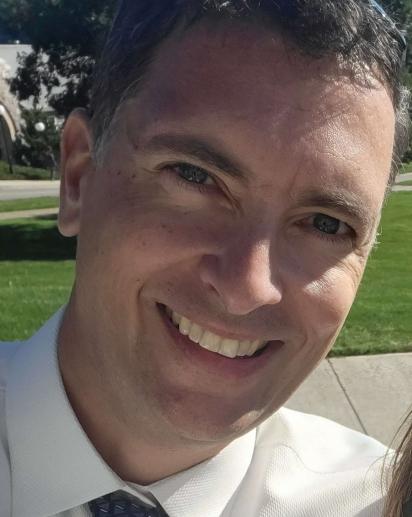
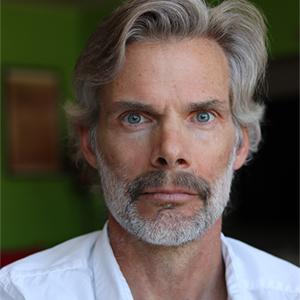
Another new-wave historian in an American Historical Review forum on the 50th anniversary of the end of the war called Vietnam’s revolutionary side “loathsome” (Jessica Chapman, Williams College).
The general pattern is to present North Vietnam as a Stalinist totalitarian police state that coerced the population into fighting through propaganda and intimidation.[39]
Never mind that Vietnam had been invaded by a Western imperial power, which had supported previous French aggression, and that its people were willing to make enormous sacrifices to defeat the foreign invader—who carried out especially savage bombing attacks and killed civilians indiscriminately—as their ancestors had repeatedly done.
Speaking glowingly of Ngo Dinh Diem, Keith Taylor, a professor of Vietnamese studies at Cornell University, considers it to be a myth that the U.S. lost the Vietnam War. Instead, he says, Americans “abandoned the war” because the anti-war movement had raised its political cost, a position that reinforces the neo-conservative “stab-in-the-back” narrative that blames the anti-war movement for the war’s outcome.[40]

Some of the new histories, it must be acknowledged, are valuable in helping to develop a better understanding of the South Vietnamese viewpoint, and in trying to explain the decision-making process in the Hanoi politburo. However, the new works tend to underplay the extent of South Vietnamese dependence on U.S.-financial support,[41] the corruption and venality of South Vietnamese elites, and extensive CIA covert activities that helped to prop them up and triggered conflict.[42]
Additionally, they say little about U.S. and South Vietnamese atrocities and fail to meaningfully discuss U.S. geopolitical strategy in Southeast Asia and to root the U.S. war in a longer imperialist design to control Southeast Asia and its natural resources dating to the mid 19th century.[43]
The discussion of internal Vietnamese rivalries largely fails to acknowledge the class dimension and way in which the U.S. was intent on exploiting those rivalries for its own perceived geopolitical advantage, fitting the pattern of other colonial powers.
For a group intent on showcasing the Vietnamese viewpoint (itself a noble goal), they oddly fail to highlight or even cite the writings of Wilfred Burchett, an Australian journalist who reported on the war from “the other side”—that is the side of the North Vietnamese government, National Liberation Front (NLF-aka Vietcong) and Pathet Lao along with the civilian population that was terrorized by the U.S. and its South Vietnamese and Laotian proxies.[44]
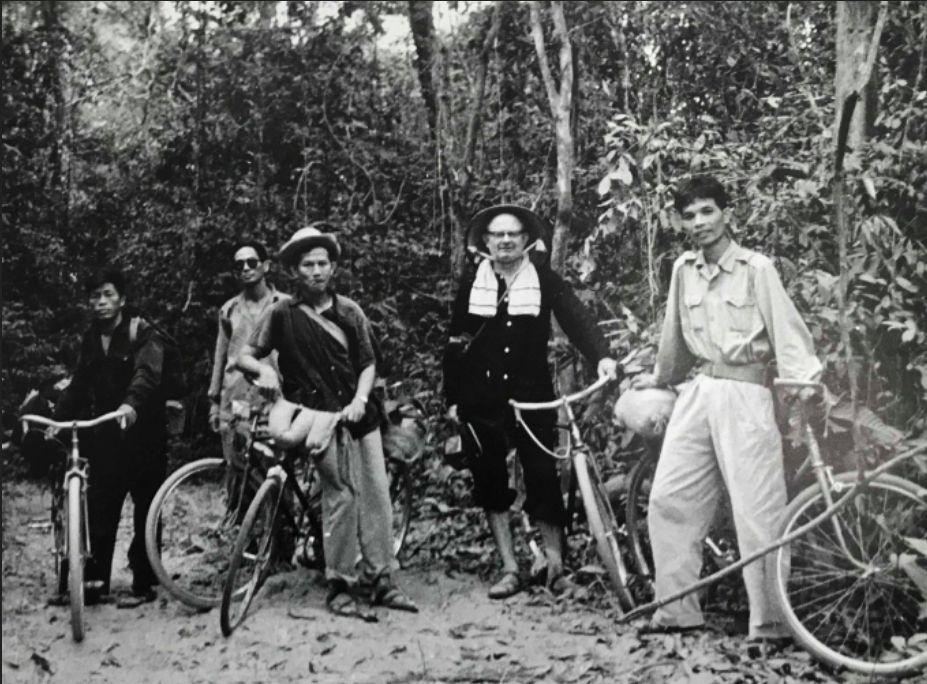
In a 2005 essay published by CounterPunch, historian Robert Buzzanco, significantly, wrote:
“Over the past few years there has been a revival of Vietnam revisionism. While the war was undeniably unpopular while it was being fought, it was politically and intellectually rebuilt in the early 1980s, when candidate Ronald Reagan called it a ‘noble cause’ and Army Colonel Harry Summers published the best-selling On Strategy to defend the war and give impetus to the ‘stabbed in the back’ thesis that has become de rigeur among many conservatives. Just in the past half-decade or so, scholars like Michael Lind, Lewis Sorley, Ed Miller, Mark Moyar, Ron Frankum, BG Burkett and Glenna Whitley, and of course Keith Taylor, among others, have written and delivered papers arguing, on many points, that the war was indeed a noble cause, that Vietnam below the seventeenth parallel was a viable and stable state, that the war was not fought disproportionately by the poor, that the U.S. military won in the field but was undermined at home, and that poor decisions and leadership in the United States not the skills and appeal of the Vietnamese communists were the main reason for American failure. Today, with the United States facing uncertain, if not dismal, prospects in the aftermath of its invasion of Iraq, such messages are not only poor history but bad politics, for they are being used to justify more than the war in Indochina in the 1960s and 1970s but American foreign policy and intervention sui generis.”
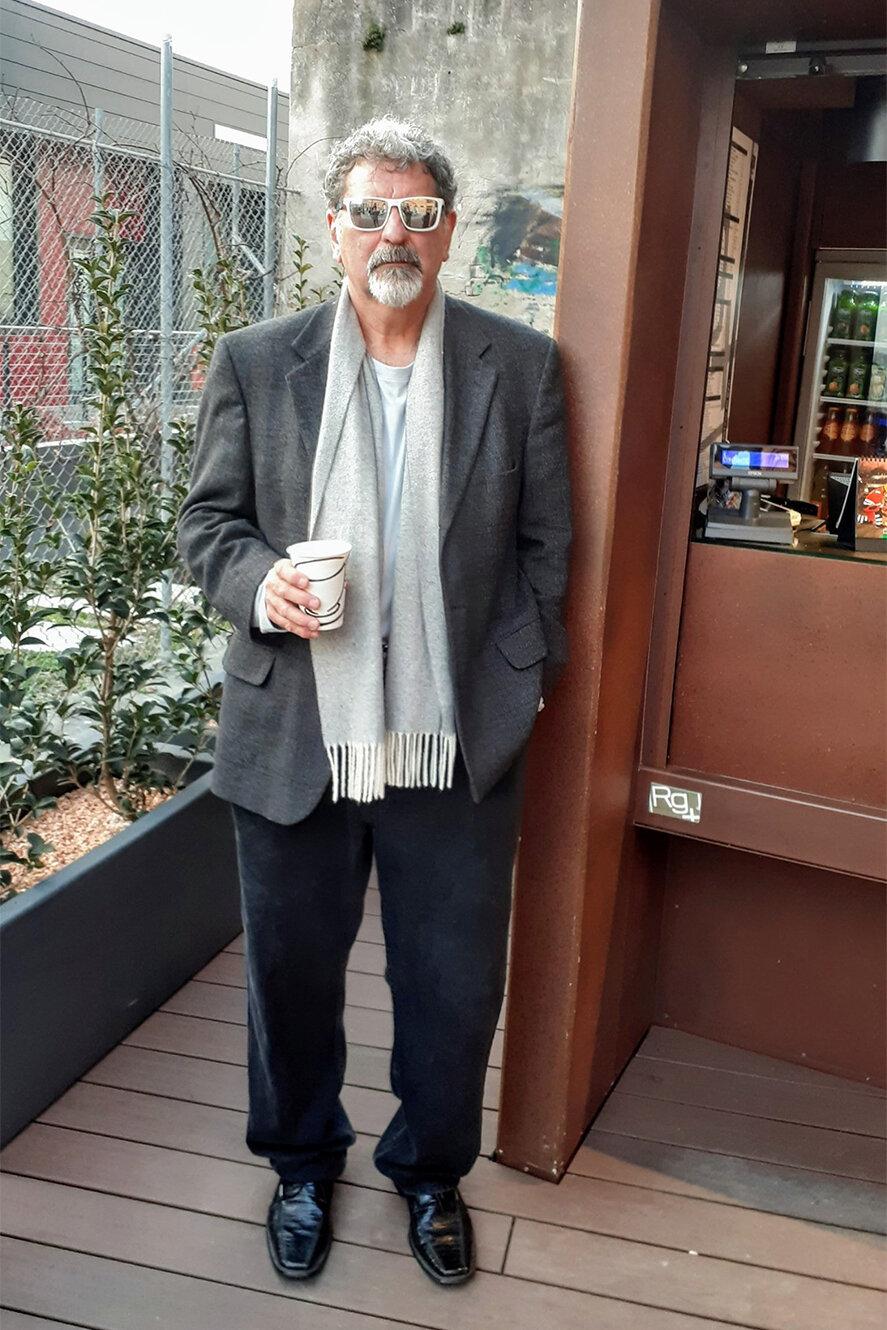
America First Committee
Historians repeatedly denigrate the America First Committee, a leading anti-war organization of the 1930s, depicting it as having been dominated by anti-Semites and bigots.
Williams College Professor Susan Dunn characteristically described America First as an “isolationist, defeatist, anti-Semitic national organization that urged the United States to appease Adolf Hitler.”[45]
In Rebels Against War: The American Peace Movement, 1933-1983 (1984), historian Lawrence S. Wittner claimed that many of America First’s leaders had “strikingly racist views.”[46]
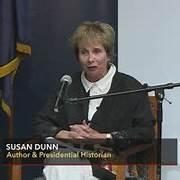
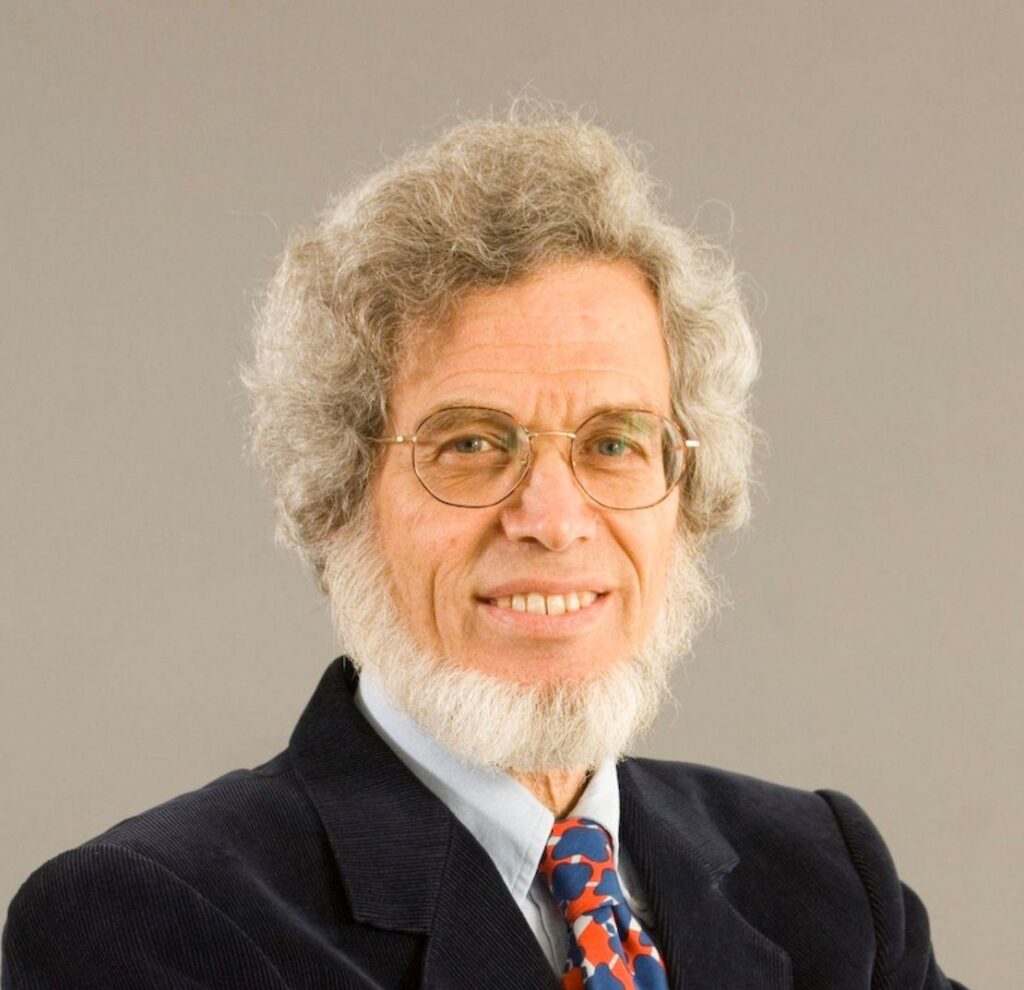
The claims about racism and anti-Semitism are not substantiated. They relate primarily to Charles Lindbergh, the famed aviator who accepted a medal by the German Nazi government in 1937 and made some statements at a speech in Des Moines, Iowa, that can be legitimately construed as anti-Semitic.
However, Lindbergh did decry the murder of Jews when news of the Holocaust broke and was more of an ardent anti-communist than anti-Semite who expressed concern about Soviet expansion in Western Europe.[47] More significantly, Lindbergh did not speak for the America First Committee, which ex-communicated fascists, and was kept off its national committee at the inception of the organization as many of his views did not align with others in it.
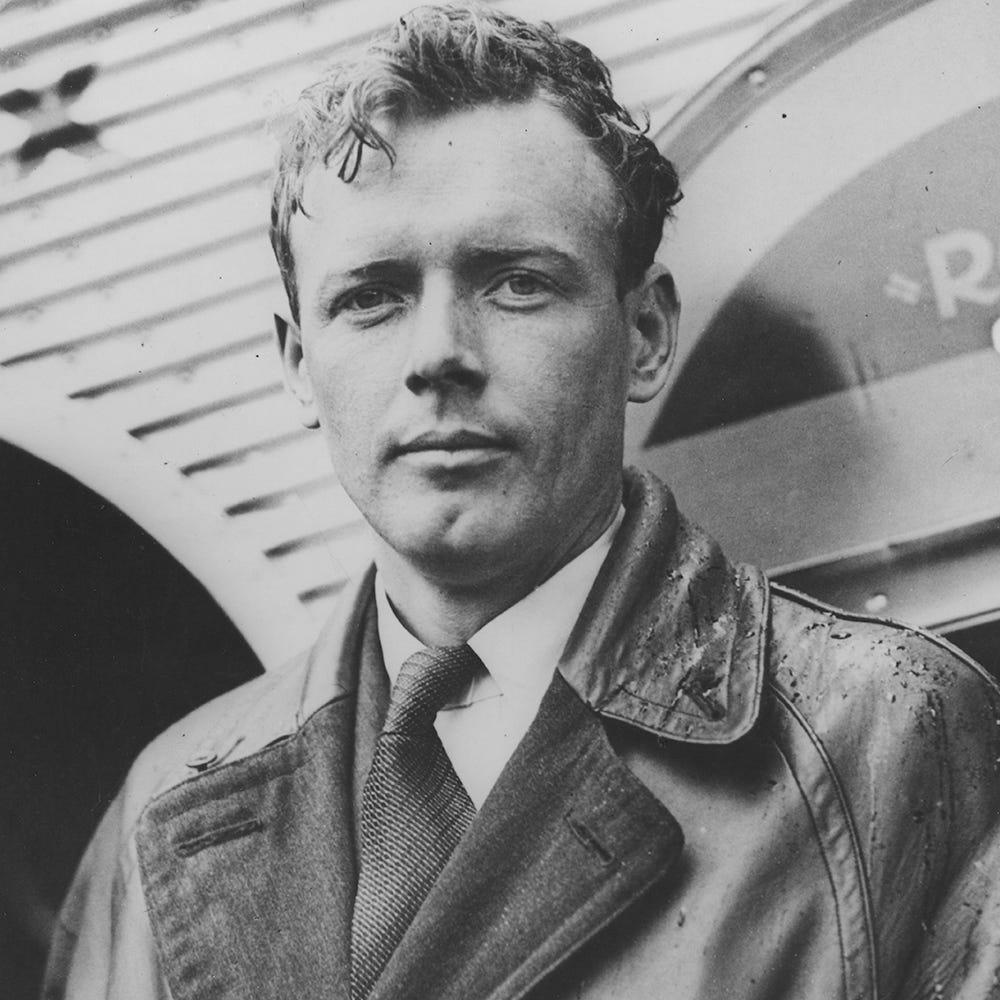
What Dunn and other historians leave out is that the America First Committee consisted of an eclectic group whose anti-war position made sense in light of the disastrous American intervention in World War I.
Pacifist Milton Mayer said the America First Committee consisted of a “mixture of Anglophobic enemies of empire and imperialism in the best American spirit” and “tens of millions of genuinely neutralist Americans of purest patriotism who wanted no part of what Jefferson called ‘the broils of Europe.’”[48]
Progressive-populist congressmen such as Burton Wheeler, Gerald Nye, Hiram Johnson and George Norris were among the best-known members of the America First Committee, along with anti-New Deal conservatives like Senator Robert Taft, famous writers like e.e. Cummings, Sinclair Lewis, Jack Kerouac, Robert Lowell and Gore Vidal, and future presidents Gerald Ford and John F. Kennedy.[49]
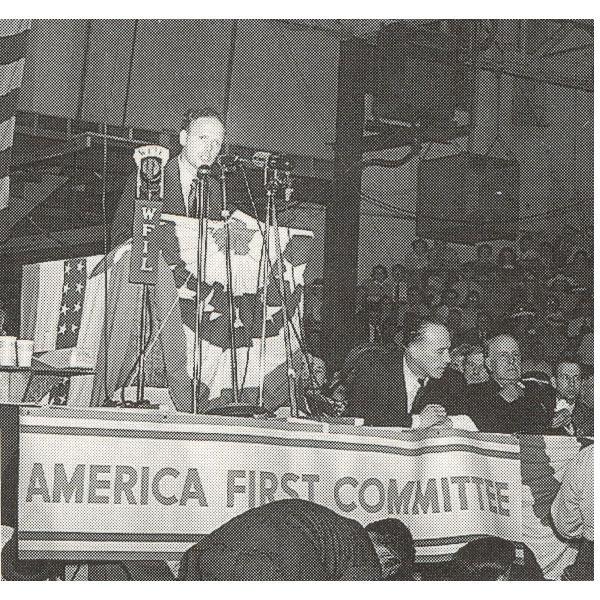
Socialist Party leader Norman Thomas was part of America First, as was Jeannette Rankin, the first congresswoman. Walt Disney was another member, along with Theodore Roosevelt’s daughter Alice, ACLU co-founder Amos Pinchot, Peace Corps founder and 1972 Democratic Party vice-presidential nominee Sargent Shriver, and historian Charles Beard, who advocated for a foreign policy based on continentalism, which he defined as a “concentration of interest on the continental domain and on building here a civilization in many ways peculiar to American life and the potentials of the American heritage.”[50]
A key question is why do historians create an identification of the America First Committee with Charles Lindbergh—who is associated with an anti-Semitic outlook—rather than figures such as Rankin, Lowell, Kerouac, Vidal and Beard who are widely admired? Or for that matter Walt Disney and JFK?
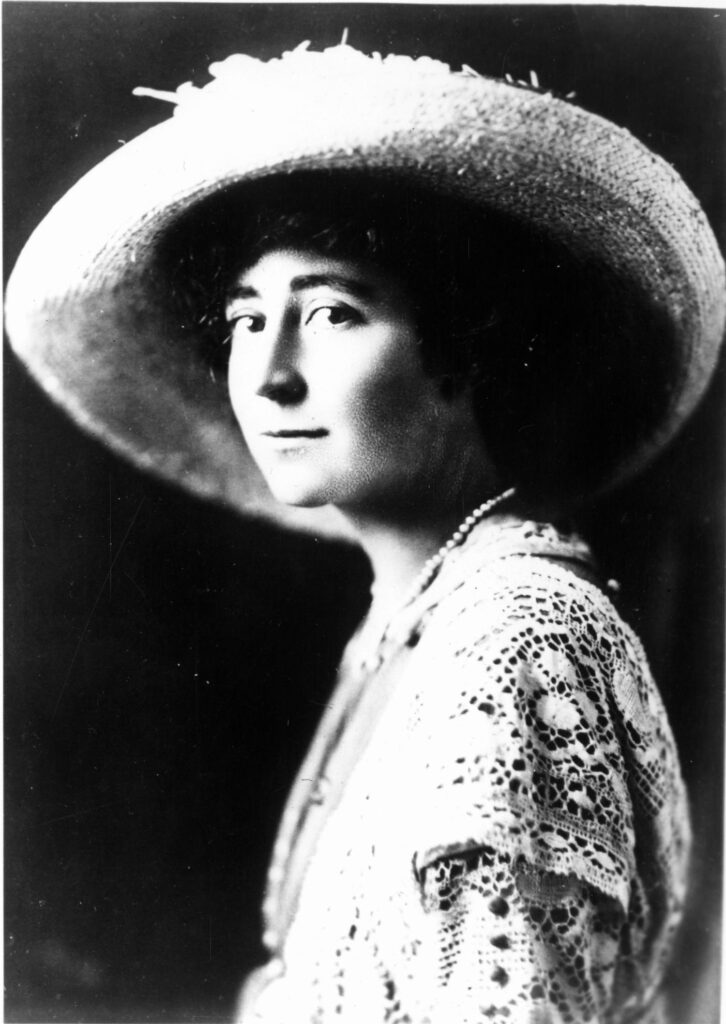

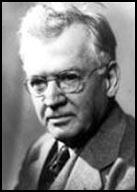
Another aspect that is not properly covered in most contemporary U.S. history classes is the unjustified repression directed against the America First Committee.
Journalist John T. Flynn wrote in 1941 “No one will [ever] know what…odium has been heaped upon honorable men and women [of the America First Committee] because they dared to lift their voices for peace and for our country.”[51]
The odium included FBI surveillance and smear attacks, congressmen being voted out of office, authors being blacklisted, magazines being forced out of circulation, and rank-and-file activists losing their jobs in a prelude to 1950s-era McCarthyism and its virulent 21st century offshoots.[52]
Negative Depiction of the Anti-Imperialist League
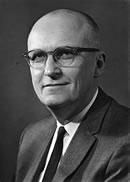
The negative depiction of the America First Committee fits with a broadly negative depiction of peace movements in U.S. history. Historian Fred H. Harrington, president of the University of Wisconsin from 1962 to 1970, for example, wrote that the achievements of the Anti-Imperialist League were “few” and that the League “left no trace in American history.”[53]
A forerunner of the America First Committee, the Anti-Imperialist League opposed U.S. military intervention and colonization of the Philippines at the turn of the 20th century.
It included such notable figures as Mark Twain and William James (the father of modern psychology) and published a particularly powerful book filled with the letters of soldiers who served in the Philippines who used racist language and openly admitted to genocidal conduct.
Harrington’s viewpoint was contradicted by William Howard Taft, the future U.S. president, then-Secretary of War, and who served as Governor-General of the Philippines from 1900 to 1903, who told reporters at the 1904 Harvard graduation that “the anti-imperialists had served as a check upon us.”[54]

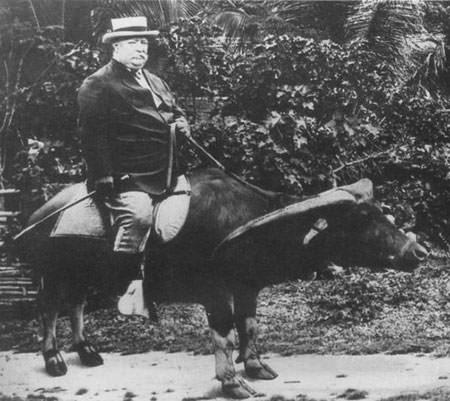
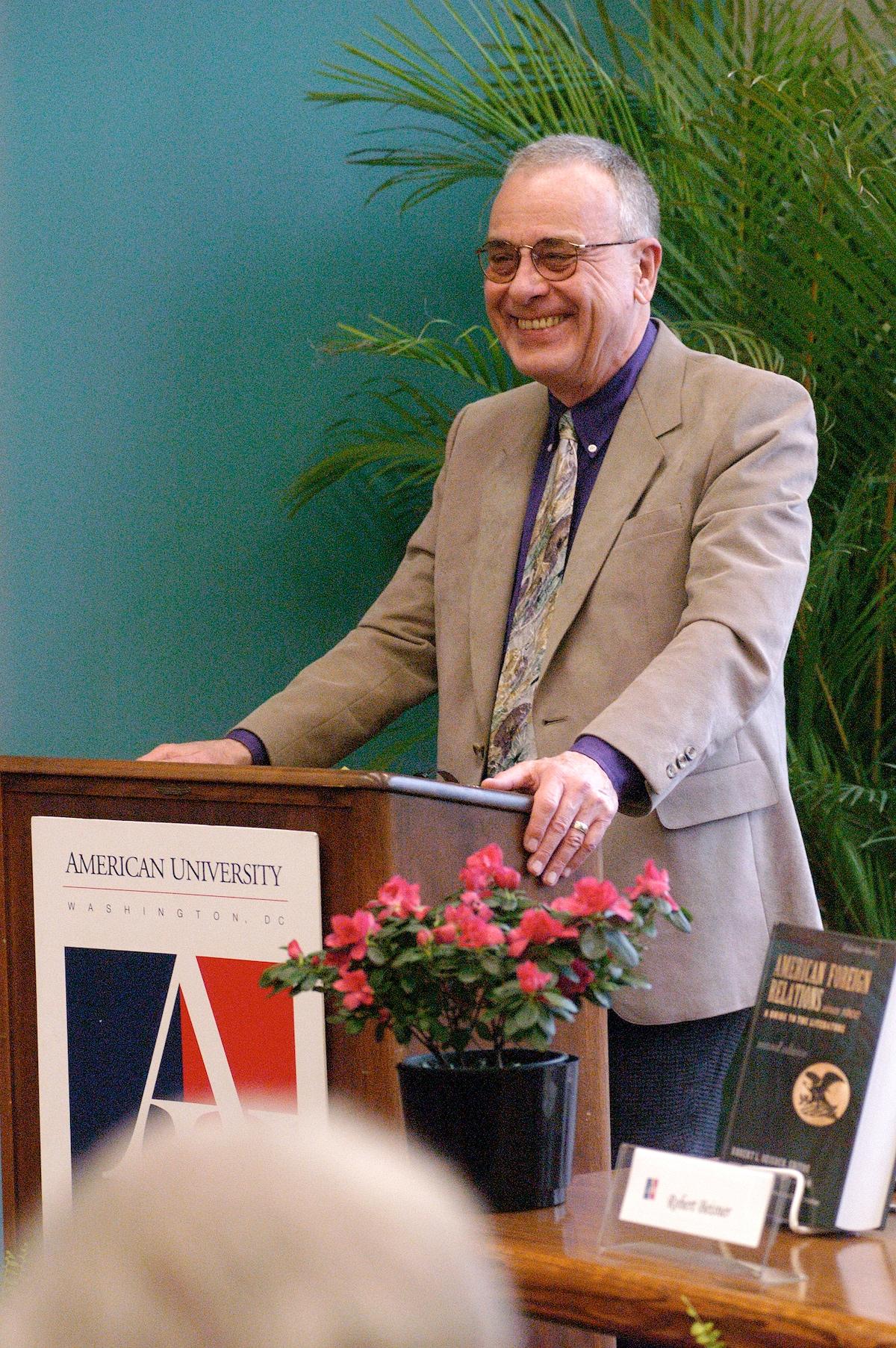
The late American University history professor Robert L. Beisner, in Twelve Against Empire, claimed that members of the Anti-Imperialist League were false prophets because “undemocratic modes of U.S. colonial rule did not produce a tyrannical backlash in the U.S.”[55]
This assessment is contradicted by Alfred W. McCoy’s 2009 book, Policing America’s Empire: The United States, the Philippines, and the Rise of the Surveillance State, which shows how U.S. colonial officials came back from the Philippines to establish a police-surveillance state in the U.S. that targeted left-wing groups and opponents of U.S. intervention in World War I.[56]
Beisner also suggests falsely that the Anti-Imperialist League’s critiques and warnings were wrong-headed because the U.S. colonial conquests in the Philippines, Cuba and Puerto Rico “did not lead to an orgy of territorial expansion” and because “American colonial rule was not characterized by incompetence, corruption, brutality and injustice.”
Beisner wrote that, “perhaps because the U.S. had no vital need to exploit the resources of its colonies, it made a record as imperial master, which compared with traditional European examples, was notably intelligent, restrained and humane.”[57]

This view is not borne out by the facts, and is contradicted by the essay https://peacehistory-usfp.org/1898-1899/.
Empire Denial
Beisner’s comments get at the heart of the empire denial, which is predominant in the American history profession.
Many cutting-edge works in the field of U.S. foreign-relations history today frame imperial interventions as “nation-building” exercises, and focus on modernization theory and development programs rather than the repressive measures that were adopted to advance American power.[58]
The importance of corporate interests in driving foreign-policy intervention is completely ignored, along with sadistic Cold War experiments and propaganda techniques that continue to manipulate public opinion.
The latter propaganda techniques include the attempt to frame American imperialistic intervention as being designed for defensive purposes—to counter Russian, Chinese or Cuban interventions—which is the way a large number of historians continue to present them.
Related to this is historians’ depiction of revolutionary forces negatively, most often with the demonized labels that they were assigned by imperial managers, i.e., terrorists, communists, insurgents—see Vietnam section as an example.[59]
Policy-makers like Henry Kissinger, who coordinated military and covert operations that resulted in millions of deaths, are generally portrayed sympathetically.[60]
When NATO’s history is covered, it is from the viewpoint of NATO’s founding fathers and generals, not from the viewpoint of the victims of its aggression.[61]
NATO historians even deny that the Clinton, Bush II and Obama administrations violated a promise by the Bush I administration not to expand NATO eastward when this promise was confirmed by written documents and reported on by government officials.[62]
Of the historians who do acknowledge the U.S. as an empire, a number claim it is one by “invitation.”[63] Still others assert that U.S. military bases were set up “to confront Soviet and Communist power around the world”—rather than to support U.S. corporate and Wall Street interests and advance U.S. global primacy.[64]
Radical historians like Howard Zinn wrote about these latter variables and the Wisconsin School, led by William Appleman Williams, developed critical analyses of the political-economic underpinnings of U.S. imperialism, which gained wide currency after the Vietnam War.
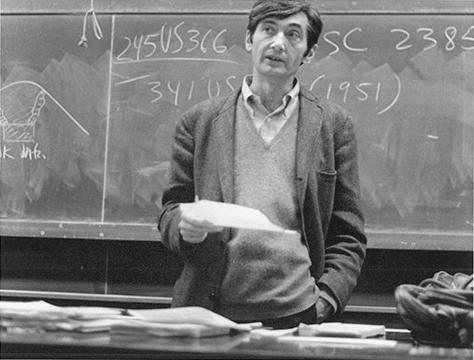
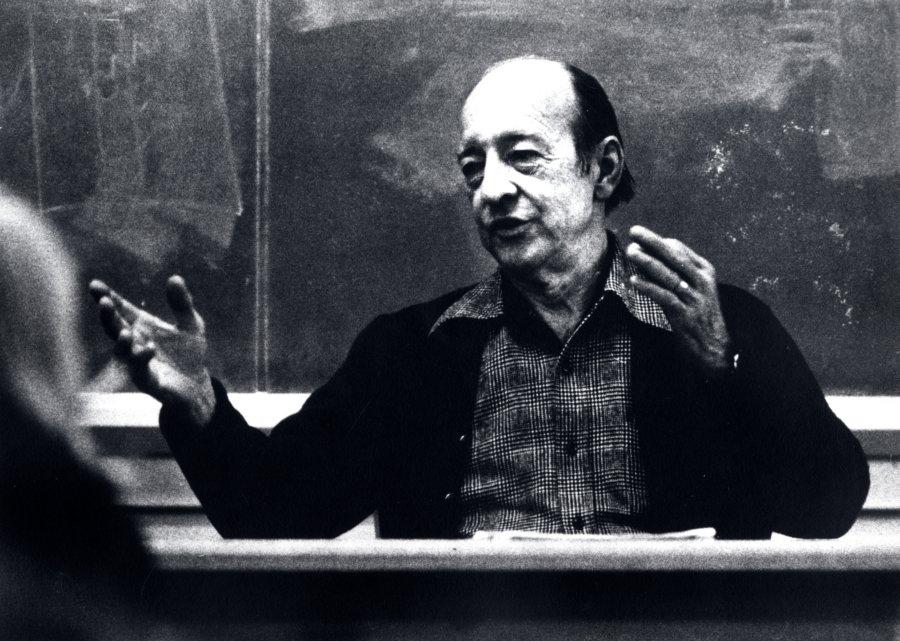
Unfortunately, the Wisconsin tradition is no longer in vogue in an increasingly repressive political atmosphere and those who try to critically analyze U.S. foreign policy face difficulty in a constricted job market and potential blacklisting.
The CIA
Hugh Wilford points out in his book, The CIA: An Imperial History, that American diplomatic historians largely ignore the history of CIA covert interventions around the world.[65]
Very few courses are offered on the history of the CIA and area studies courses almost universally ignore CIA machinations.

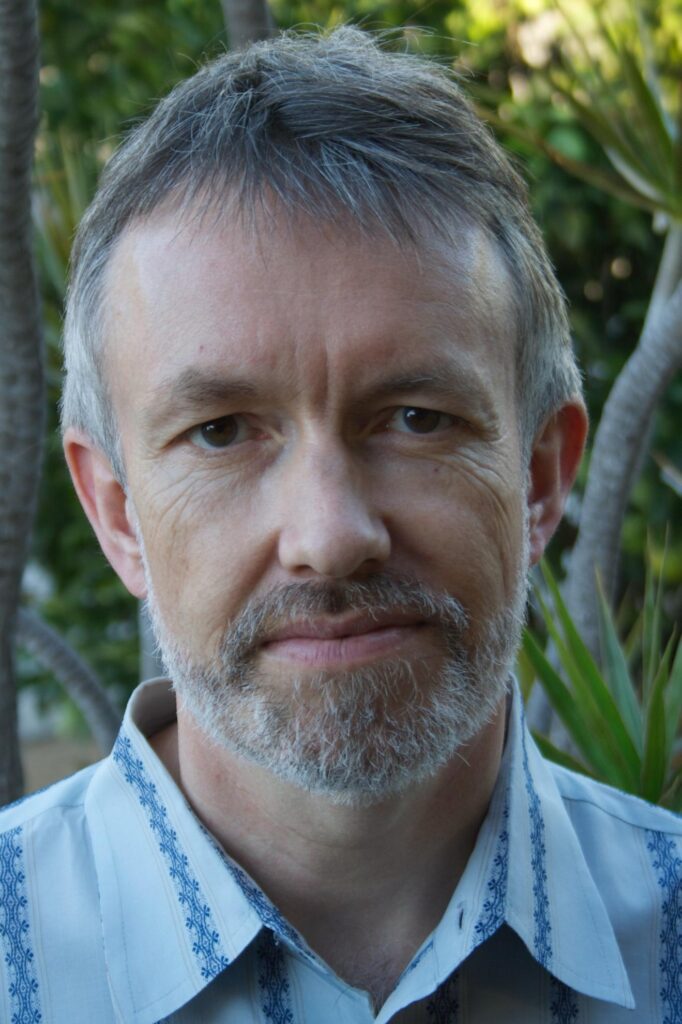
Histories of the Vietnam War rarely address the CIA’s pivotal role in helping to trigger the conflict, or creating a clandestine army in Laos, financed in part through the opium trade, that provided targets for a deadly bombing campaign that killed thousands of civilians.
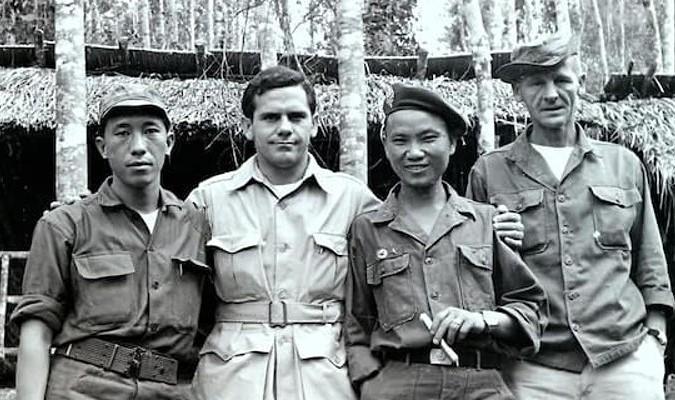
Additional taboo topics include: a) the CIA’s ties to organized crime and use of black funds drawn from stolen Japanese gold at the end of World War II; b) its adoption of torture techniques and involvement in political assassination; and c) the close connection between the CIA and U.S. financial elites such as the Rockefeller family.
When the CIA is covered, often it is presented favorably. An article in the April 2024 newsletter of the Society for Historians of American Foreign Relations (SHAFR) was, characteristically, titled “The CIA as a Force for Peace.”
At its annual conference in 2018, SHAFR invited former CIA Director David Petraeus as a guest speaker. He presented the official agency view on the Syrian and Libyan conflicts, which is what many professors are presenting to their students—if these conflicts are covered at all, which they are usually not.
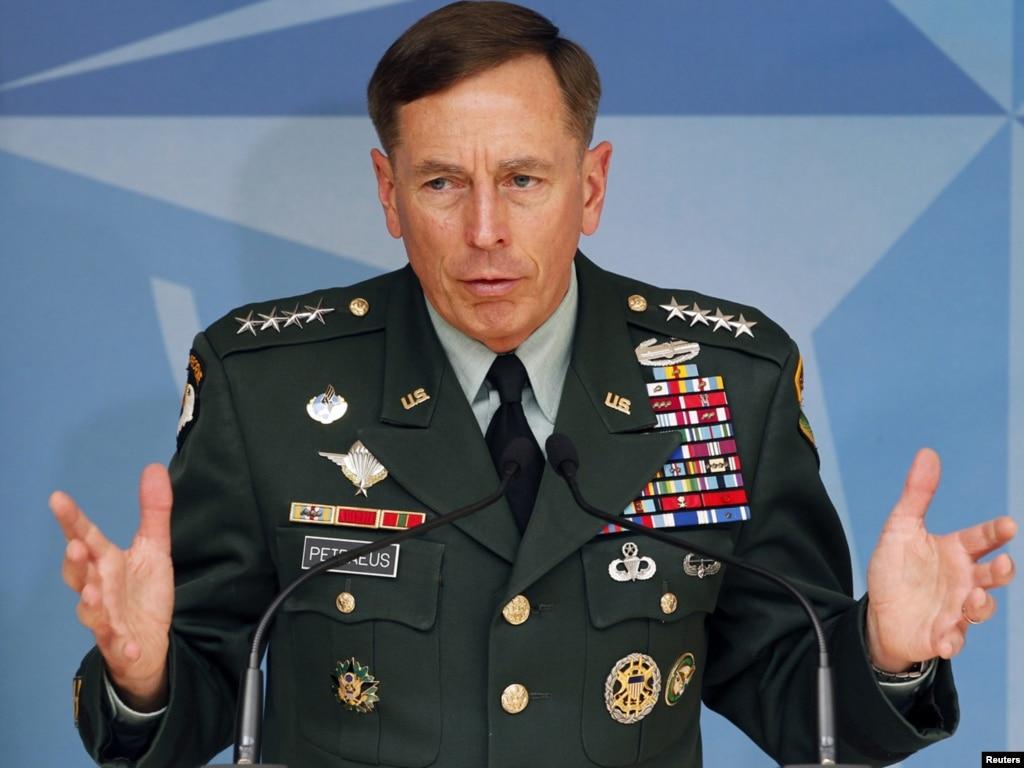
False-Flag Operations and American Wars
American historians do not generally acknowledge that almost all of the nation’s wars through the present were rooted in false-flag incidents that were set up by the intelligence agencies or military in an attempt to manufacture outrage among the population against a foreign enemy and to get them to suspend rational judgment.
The pattern was first established during the Indian Wars when Native Americans were accused of carrying out unprovoked attacks on white settlers that never took place.
The main false-flag incident that is acknowledged is the Gulf of Tonkin incident that triggered the Americanization of the war in Vietnam—in part because evidence of this was disclosed in the Pentagon Papers.
A false-flag incident that is not widely acknowledged is the sinking of the Lusitania, which Woodrow Wilson invoked as a pretext for U.S. military intervention in World War I—two years after the original sinking.
In a leading college textbook, Give Me Liberty!, distinguished Columbia University historian Eric Foner writes: “In May 1915, a German submarine sank the British liner Lusitania (which was carrying a large cache of arms) off the coast of Ireland, causing the death of 1,198 passengers, including 124 Americans.”[66]
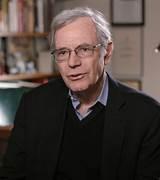
This statement is misleading on numerous levels. The Lusitania did not just carry arms, but was laced with explosives which, when set off, led to the ship’s sinking. Winston Churchill, who was then head of the British Navy, deliberately withheld rescue boats to maximize civilian casualties and, hence, public outrage, which Foner leaves out.[67]
Foner also fails to disclose that Woodrow Wilson was instructed by his Secretary of State, William Jennings Bryan, to take out an ad in The New York Times telling passengers not to board the Lusitania, which Wilson refused to do.
The goal of the Lusitania sinking was to get the Wilson administration to commit U.S. troops to the war—a goal shared by Wilson’s wealthy financial backers who stood to make a financial killing. These backers—whom Foner does not discuss—included J.P. Morgan, who floated a loan to Britain and France which required an allied victory to be repaid.[68]
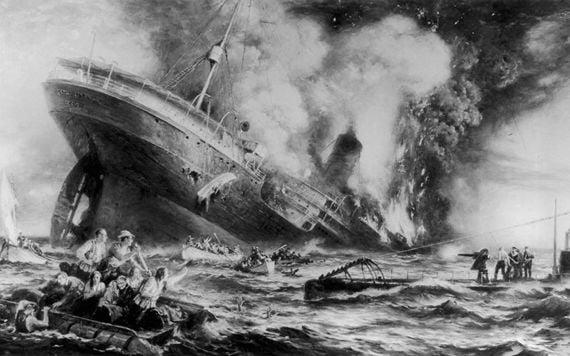
The Korean War
Foner misleads students about the origins of the Korean War by writing that, “in June 1950, the North Korean army invaded the south, hoping to reunify the country under communist control.”[69]
In reality, South Korea had sent police agents trained by the U.S. government to carry out sabotage and terrorist operations above the northern parallel well before June 25, 1950, in order to create a provocation.
Media reports on June 25 also reported on South Korean troops pushing northward and capturing Haeju, the capital of South Hwanghae Province, a mile north of the 38th parallel.[70]
Foner has little to say about the brutal repression carried out by the U.S. proxy regime in South Korea led by Syngman Rhee who had been flown into South Korea on an Office of Strategic Services (OSS) plane. The repression was carried out by army and police units that had previously collaborated with the Japanese and were trained by the U.S.[71]
Foner might have compared the widescale atrocities committed by U.S. troops in Korea with parallel atrocities in the Vietnam and Philippines wars, among others.[72]
He should have further profiled the courageous dissenters to the Korean War who endured social ostracism and the threat of violence during the heart of the McCarthy era [73]

Korean War Germ Warfare
Historians have for years helped advance the falsehood that American pilots who confessed to carrying out germ-warfare attacks in the Korean War had been brainwashed by the North Koreans and Chinese, and that the Soviet Union manufactured documents to frame the U.S. government and CIA.[74]
In 2019, the CIA conceded that it had been lying to the public for decades about germ warfare in Korea when it released a trove of signals intelligence documents in a publication called Baptism by Fire: CIA Analysis of the Korean War. The documents detail communications from CIA listening posts around the world that narrate the People’s Volunteer Army (PVA) of China and the North Korean People’s Army (KPA) responses to U.S. biological warfare (BW) attacks by airplane in North Korea from May 1951 through July 1953.[75]
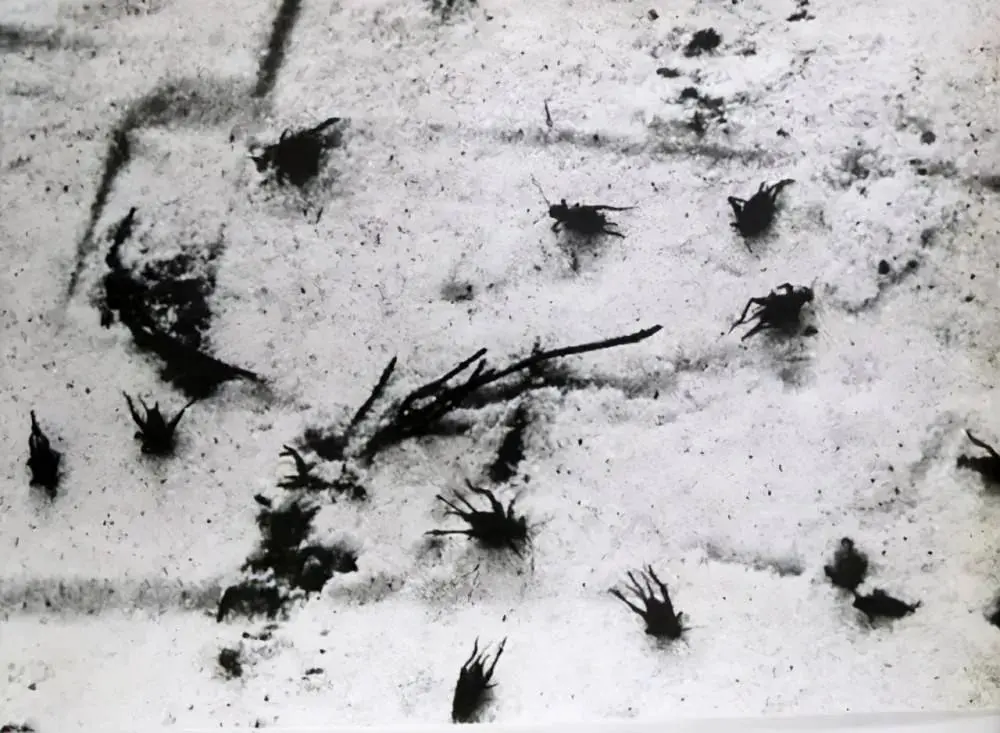
Frank Olson Murder by the CIA
Academic historians rarely if ever cover the CIA’s role in murdering Dr. Frank Olson, a CIA biochemist who was involved in Operation MK-ULTRA mind-control experiments, the recruitment of Nazis under Operation Paperclip, and the development of germ-warfare capabilities at a secret U.S. army facility at Ft. Detrick, Maryland, where he worked.
The official story was that Dr. Olson had committed suicide by jumping out of his hotel room window after he was given LSD. A forensic examination of Olson’s body, however, showed that the cause of his death was “blunt force trauma to the head.”[76]
When I presented a paper on this topic at an NYU conference, many people said they liked my paper. However, a CIA historian, Richard Immerman of Temple University, attacked the paper, and it was dropped from a book on whistleblowers that arose out of the conference.[77]

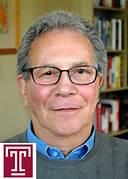
The CIA’s Role in Watergate
Recent scholarship has shown how the CIA helped orchestrate the Watergate scandal as a means of ousting Richard Nixon in a neo-conservative coup d’état.
This escapes the attention of Eric Foner and most other liberal historians who legitimately depict Nixon negatively but miss the wider intrigue associated with Watergate.[78]
These intrigues include the hoodwinking of the public to believe that Bob Woodward was a heroic muckracking journalist when he was used by the CIA to help facilitate Nixon’s downfall.
Foner et al. also fail to alert students to the large number of mysterious deaths associated with Watergate and downing of an airplane in which the wife of Watergate plumber E. Howard Hunt and numerous other people associated with the scandal were on-board.[79]

The Dark Side of Liberal Presidents
Foner’s book Give Me Liberty! is characteristic in failing to discuss the illegal acts that marked the rise to power of Lyndon B. Johnson and Bill Clinton, among other Democratic Party presidents.
An article that I published in CovertAction Magazine details Johnson’s involvement in murders that resulted from his need to cover up his theft of the 1948 U.S. Senate election in Texas. The Kennedy brothers had information on Johnson’s criminal behavior that they were in the process of leaking to the media just before JFK’s assassination.[80]
Foner’s history text, like most others, makes no mention of this. Nor do Foner and his contemporaries discuss Bill Clinton’s overseeing a drug and arms-smuggling operation to the Nicaraguan Contras in the 1980s when he was Arkansas governor, and the laundering of drug money by Clinton donors in Arkansas banks under the oversight of Rose Law Firm partner Hillary Clinton.[81]
Barack Obama’s shady political associations and family ties to the CIA are, predictably, also left out of mainstream history texts. My book Obama’s Unending Wars details Obama’s close alliance with the war profiteering Crown and Pritzker families, and how one of Obama’s top financial donors, Tony Rezko, profited from housing privatization bills that Obama passed as an Illinois state senator, which adversely impacted the South Side of Chicago’s Black population.
This history is censored by professors whose ritual praise and hero worship of America’s first Black president was compared by one analyst to North Korean hagiographies of Kim Jong Un.[82]
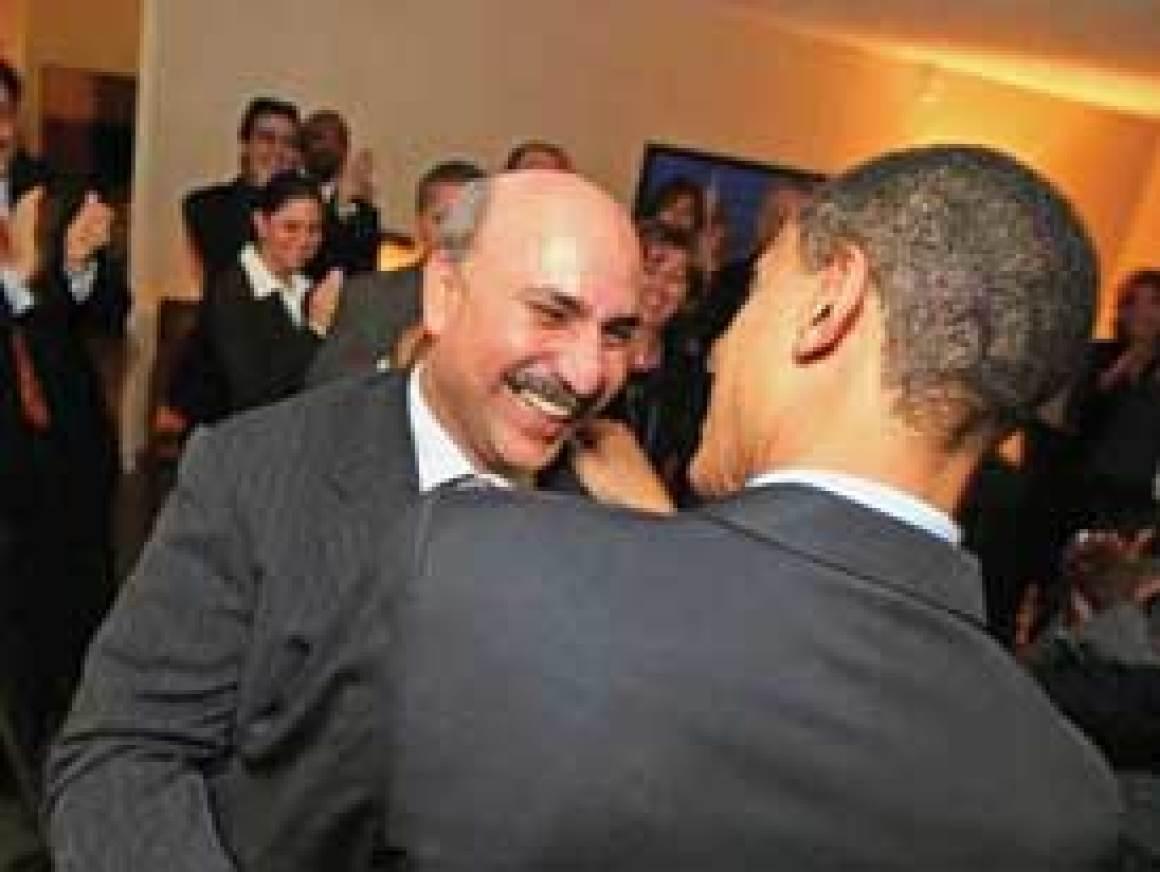
The Goose Step
Upton Sinclair, in his 1923 book The Goose-Step: A Study of American Education, explored the consequences of capitalist plutocracy‘s control over American higher education.[83]
Sinclair concluded that the educational system’s purpose was not to benefit mankind but, rather, to maintain the capitalist status quo—a conclusion equally valid in 2025.
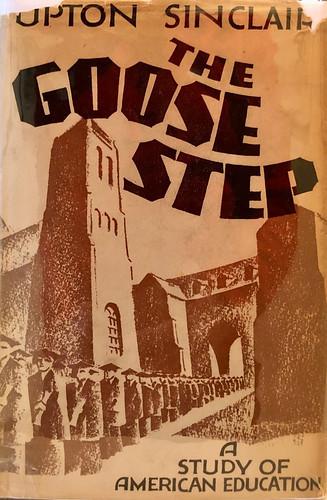
The study of history has always been a cornerstone of the liberal arts with pivotal contemporary ramifications.
To be sure, the history profession has evolved considerably since the time of Sinclair’s writings and is much better in covering historical injustices like slavery, and in highlighting the struggles of social movements in U.S. history and marginalized social groups.[84]
However, the coverage of U.S. foreign policy and what some might term “deep state” political intrigues is still significantly lacking, as are the machinations of oligarchical elites and their control over the political structure.
If the students who set up encampments to protest Israel’s genocide in Gaza had a better historical education, no doubt they would have broadened their protests.
With hope, some alternative institutions might yet develop that can fill the lacunae.
- This article is the second of two this week at CovertAction Magazine that are part of a back-to-school special that spotlights the corruption of higher education and its symbiotic relationship with U.S. intelligence agencies.
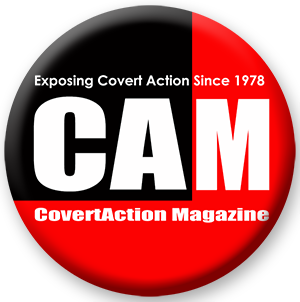
An exception to the general norm is Walter L. Hixson’s excellent book, American Settler Colonialism: A History (New York: Palgrave Macmillan, 2013). ↑
My two books: Warmonger: How Clinton’s Malign Foreign Policy Launched the US Trajectory from Bush II to Biden (Atlanta: Clarity Press, 2024) and Obama’s Unending Wars: Fronting the Foreign Policy of the Permanent Warfare State (Atlanta: Clarity Press, 2019), though deeply researched, are to my knowledge never assigned in any courses and were barely reviewed if at all in academic journals. By contrast, there is a cottage industry of books on the conservative movement whose authors often obtain choice academic appointments and high prestige in the history profession. ↑
The Populists were portrayed this way in Richard Hofstadter’s classic book, The American Political Tradition and the Men Who Made It (New York: Alfred A. Knopf, 1948). ↑
One of the most left-wing Senators and Governors in recent U.S. history, Huey Long of Louisiana, has often been depicted as a dictator by historians who cover up the fact that Long was assassinated in a conspiratorial plot backed by Louisiana’s financial elite. Harvard historian Arthur Schlesinger Jr. of the Kennedy brain trust said this of Long: “I think Huey Long’s great passion was for power and money, and he stole a lot of money and accumulated a lot of power and destroyed all those who got in the way of these two ambitions.” Meanwhile, Long, who adopted a share the wealth program, is beloved in the state of Louisiana for having expanded state services and improved living conditions and for being a rare politician who spoke to regular working people’s concerns. ↑
Jeff Kisseloff, with foreword by Tony Hiss, Rewriting Hisstory: A Fifty-Year Journey to Uncover the Truth About Alger Hiss (Lawrence: University Press of Kansas, 2025), 265, 301. See also Joan Brady, America’s Dreyfus: The Case Nixon Rigged (London: Skyscraper Publications, 2015). Klehr says that he considers himself to be on the political left, but hardly revolutionary. He has authored numerous books on the history of American communism. ↑
Kisseloff, Rewriting Hisstory, 265, 301. ↑
The latter theory supported by Logevall was advanced by the Warren Commission, which has been shown in numerous books to have been set up to cover up the truth like other fraudulent government commissions (ie. Roberts commission and Pearl Harbor, 9/11 commission). Members of the Warren commission itself said they did not endorse the commissions’ findings. Hale Boggs (D-LA) was the one to prompt the investigation of Louisiana District Attorney Jim Garrison after he told Garrison that the commission was corrupt. ↑
William F. Pepper, The Plot to Kill King: The Truth Behind the Assassination of Martin Luther King Jr. (New York: Skyhorse Publishing, 2016); William F. Pepper, Orders to Kill: The Truth Behind the Murder of Martin Luther King (New York: Carroll & Graf, 1995); William F. Pepper, An Act of State: The Execution of Martin Luther King (New York: Verso, 2018). For a summary of key evidence, see also Jeremy Kuzmarov, “Did J. Edgar Hoover Order the Assassination of Martin Luther King Jr.,” CovertAction Magazine, January 17, 2022. ↑
Beverly Gage, G-Man: J. Edgar Hoover and the Making of the American Century (New York: Viking, 2022), chapter 54. In the book Gage, a liberal, also suppresses the FBI’s role in covering up the RFK assassination. See my essay on the RFK assassination here. Gage’s biography is generally well researched and does not present a flattering portrait of Hoover. An earlier book she wrote, The Day Wall Street Exploded: A Story of America in Its First Age of Terror (New York: Oxford University Press, 2010) is well researched and written. Her proficiency as a historian makes her treatment of the King assassination all the more troubling. ↑
See Kuzmarov, “Did J. Edgar Hoover Order the Assassination of Martin Luther King Jr.,” ↑
Their interpretation subscribes to what some analysts have called “Trump derangement syndrome” which considers Trump to be a departure from regular U.S. politics and the source of all evil in political life. ↑
Robert J. Donovan, The Assassins (New York: Harper, 1955), 8. ↑
See the CovertAction Magazine series on political assassinations, and Jeremy Kuzmarov, Political Assassination—As American as Cherry Pie (forthcoming). ↑
An example of the latter by a strongly liberal historian is Emily S. Rosenberg, A Date Which Will Live: Pearl Harbor in American Memory (Durham, NC: Duke University Press, 2005). Another example is Eric Foner who writes in his popular college textbook Give Me Liberty! An American History, Vol. 2: From 1865, 6th ed. (New York: W. W. Norton, 2019) that “Pearl Harbor was a complete and devastating surprise. To this day, conspiracy theorists abound suggesting that FDR knew of the attack and did nothing to prevent it, so as to bring the United States into the war. No credible evidence supports this charge” (p. 561). In fact, there is much credible evidence presented in dozens of books that Foner does not cite. See, among other books, Robert B. Stinnett, Day of Deceit: The Truth About FDR and Pearl Harbor (New York: Free Press, 2001). I provided a detailed examination of much of the evidence in an essay on my website available here. The term conspiracy theorist is totally inappropriate given that it is an irrefutable fact that Army Chief of Staff George C. Marshall was informed about the Pearl Harbor attacks hours before they took place but inexplicably did not pick up his scrambler phone to notify naval commanders in Hawaii. Marshall was asked about this by an army commission and, rather then denying it, said he did not pick up the scrambler phone because he was worried the Germans’ might have heard the call; an answer that left members of the army commission befuddled. ↑
Howard Zinn, A People’s History of the United States, 1492-Present, rev ed. (New York: Harper Perennial, 2003), 411. ↑
The Roosevelt administration carried out these acts because the president recognized that the American public would never support intervention in another world war unless it was directly attacked. The U.S. wanted to dominate Southeast Asia and establish an empire of military bases, and Japan’s Greater East Asia Co-Prosperity Sphere stood in the way. ↑
Former Pacific Fleet Commander James O. Richardson called the Roberts Commission report “the most unfair, unjust and deceptively dishonest document ever printed by the Government Printing Office…A more disgraceful spectacle has never been presented to this country during my lifetime.” In his 1955 memoir, retired four-star Admiral William H. Standley, an old friend of Roosevelt who sat on the Roberts Commission, stated that Judge Owen Roberts’s performance as head of the commission was “as crooked as a snake.” A fair-minded investigation would have found the uniformed heads of the Army and Navy in Washington “fully culpable.” ↑
See John C. Culver and John Hyde, American Dreamer: A Life of Henry A. Wallace (New York: W.W. Norton, 2001). ↑
Robert Lovett was Defense Secretary under President Truman and a key architect of the Korean War, which resulted in the deaths of one-tenth of North Korea’s population and unimaginable human suffering. ↑
Hal Brands, Latin America’s Cold War (Cambridge, MA: Harvard University Press, 2012). ↑
Hal Brands, From Berlin to Baghdad: America’s Search for Purpose in the post-Cold War World (Lexington: University Press of Kentucky, 2008). ↑
Norman Naimark, The Russians in Germany: A History of the Soviet Zone of Occupation, 1945-1949 (Cambridge, MA: Harvard University Press, 1997). Mark Kramer, the Director of the Cold War Studies Project at Harvard University’s Davis Center, is another Cold War historian of conservative and Russophobic bent who wrote that the hallmarks of the Russian state under Vladimir Putin are “thuggish criminality and disregard for international norms.” That this characterization might actually apply to the U.S. government under George W. Bush, Donald Trump and others escapes his notice. After the commencement of Russia’s Special Military Operation in Ukraine in February 2022, Kramer wrote a brief editor’s note for the Journal of Cold War Studies that he edits condemning Putin for launching an “unprovoked war,” causing “immense bloodshed, suffering, and destruction in Ukraine and has been accompanied in Russia by the reimposition of Soviet-style censorship and severe repression against anyone who questions the war.” Kramer continued: “Whatever Putin’s motives may be, his brutal actions and cruelty deserve unequivocal condemnation.” Kramer’s view of unprovoked aggression dovetails with the official line of the CIA and State Department and has been widely debunked. ↑
Hoover quoted in Ken Lawrence, “The Academic Subversive Today,” Covert Action Information Bulletin, 4 (April-May 1979), 23. ↑
Timothy Snyder, Bloodlands: Europe Between Hitler and Stalin (New York: Basic Books, 2010); Grover Furr, Blood Lies: The Evidence that Every Accusation Against Joseph Stalin and the Soviet Union in Timothy Snyder’s Bloodlands Is False” (New York: Red Star Publisher, 2014).See Mark B. Tauger, “The 1932 Harvest and the Famine of 1933,” Slavic Review, 50, 1 (Spring 1991); Ekaterina Blinova, “The Holodomor Hoax: Joseph Stalin’s Crime That Never Took Place,” The Greanville Post, August 10, 2015. The hoax was first advanced by Ukrainian far-right neo-Nazi leaders backed by the CIA, according to Blinova. ↑
One of the few books that has anything positive to say about the Soviet Union and some of its people is Ron Ridenour, The Russian Peace Threat: Pentagon on Alert (London: Punto Press, 2018). But, of course, this is not a book that is assigned to students. ↑
See Jeremy Kuzmarov, “U.S. Corporations Made a Killing in Soviet Russia After Lenin Exempted Many of Them from Nationalization Decrees—So Why Was There Ever a Cold War?” CovertAction Magazine, August 15, 2025; Gabriela Gavrilov, U.S.-Russian Commercial Relations 1763-1933 (self-published, 2024). ↑
In 1976, Pipes, who was born in Poland, led a group of military and foreign-policy experts, known as Team B, who advanced alarmist and grossly exaggerated analyses of the Soviet Union’s military capabilities in a CIA study in an attempt to end Nixon-Kissinger’s détente policy and promote greater defense spending by the U.S. and more aggressive military and covert operations around the world. ↑
Previously, Plokhii wrote a book about the Yalta peace conference arguing that Roosevelt and Churchill were duped into signing the agreement as a result of Stalin’s charm, and that the lesson we should draw from that history is that Western leaders should not sign any diplomatic agreements with dictators who “don’t share common values”—a claim that assumes Western moral superiority and ignores the long U.S. support for dictators who allow for exploitation of their countries natural resources. ↑
See also George McT. Kahin, Intervention: How America Became Involved in Vietnam (New York: Alfred A. Knopf, 1986) which provides a sound assessment. ↑
This view is presented in Pierre Asselin. Vietnam’s American War: A History (New York: Cambridge University Press, 2018) and Edward Miller, Misalliance: Ngo Dinh Diem, the United States, and the Fate of South Vietnam (Cambridge, MA: Harvard University Press, 2013). Historian Robert Buzzanco wrote in 2005 that “Philip Catton, Ed Miller, and others claim that America’s hand-picked leader in southern Vietnam, Ngo Dinh Diem, was actually a capable leader and his ouster and death, sanctioned by the U.S., was a major mistake in retrospect for he was developing a stable regime below the seventeenth parallel. Indeed, at a session, chaired by Keith Taylor, during the 2004 meeting of the Society of Historians of American Foreign Relations [SHAFR], Ron Frankum and Mark Moyar spoke glowingly of Diem, with only a few concerned questions from the audience of experts.” ↑
By 1958, Diem’s regime had jailed more than 40,000 political prisoners and executed more than 12,000 dissidents. By 1961, those numbers had tripled. The cruelty of Diem’s regime is detailed in Wilfred Burchett, The Furtive War: The United States in Vietnam and Laos (New York: International Publishers, 1963) and other books by Burchett, which the revisionists never refer to. My book on the CIA’s role in building South Vietnam’s internal security apparatus is also never cited by the new revisionists. Jeremy Kuzmarov, Modernizing Repression: Police Training and Nation-Building in the American Century (Amherst, MA: University of Massachusetts Press, 2012), ch. 7. ↑
Asselin, Vietnam’s American War; Miller, Misalliance characteristically misrepresents the Strategic Hamlet program. See Truong Nhu Tang, A Vietcong Memoir: An Inside Account of the Vietnam War and Its Aftermath (New York: Vintage, 1986) which discusses how the Strategic Hamlet program was infiltrated by spies and run by Vietcong agents because it was a great recruiting tool for them. See also Marilyn B. Young, The Vietnam Wars 1945-1990 (New York: Harper Perennial, 1991). ↑
See H. Bruce Franklin, Vietnam and Other American Fantasies (Amherst, MA: University of Massachusetts Press, 2000). Daniel Ellsberg averred more than four decades ago in the documentary Hearts and Minds, “A war in which one side [i.e., the Republic of Vietnam] is entirely financed and equipped and supported by foreigners is not a civil war.” In Ellsberg’s view, Americans should not have asked whether “we were on the wrong side in the Vietnamese war”; instead, they should have recognized that “we are the wrong side.” ↑
Miller, Misalliance, 14, 16. Miller suggests that Diem was not a puppet of the U.S. because the U.S. decided to overthrow him; an ignorant claim that shows a lack of awareness of the pattern by which U.S. governing elites will build up and then discard foreign leaders when it suits them. Miller later undercuts his own argument when he acknowledges that the U.S. provided Diem’s regime with more than $2 billion in foreign aid from the mid-1950s through the early 1960s. Miller’s work and that of other Vietnam War “revisionists” is refuted by James Bradley, Precious Freedom: A Novel of the Vietnam War (New York: Skyhorse, 2025), which is based on extensive interviews with Vietnamese war veterans and civilians. The Vietnamese Bradley interview all emphasized that Vietnam is one country, that South Vietnam was an illegitimate U.S. political construct, and that the people willingly mobilized together to defeat the U.S. invaders and their proxies. ↑
Asselin, Vietnam’s American War, 379. ↑
Asselin makes a point of attacking the Bertrand Russell War Crimes Tribunal which exposed U.S. war crimes, calling it “highly partisan and deeply flawed.” (Vietnam’s American War, p. 174) Asselin makes an additional point of attacking the credibility of the authors of a study that called South Korean soldiers who fought in South Vietnam and committed many massacres, “America’s Rented Troops.” In reality, this study put out by the American Friends Service Committee, is corroborated by U.S. military records and U.S. soldier testimonials. (Asselin gives the impression that the latter are beneath him to read since he claims that the war was only about Vietnam and Americans did not matter). ↑
See Nick Turse, Kill Anything That Moves: The Real American War in Vietnam (New York: Metropolitan Books, 2013); Bernd Greiner, War Without Fronts: The USA in Vietnam (Yale University Press, 2010); Douglas Valentine, The Phoenix Program (New York: William Morrow, 1990); and Noam Chomsky, For Reasons of State (New York: Pantheon Books, 1973) among many other works. Turse and Valentine are journalists and not college professors and Greiner lives in Germany. Asselin makes a big point of touting his time spent in Vietnam archives. But he hypocritically omits mention of Turse’s book when Turse spent months trekking to remote areas of Vietnam to interview people who had experienced U.S. atrocities in the war. And the stories people told Turse were worse than what even antiwar activists had recognized in the 1960s and 1970s. ↑
Asselin, Vietnam’s American War. Ho Chi Minh and his successor Le Duan are depicted as murderous tyrants in this and other studies (including Columbia University professor Lien Hang Nguyen’s book, Hanoi’s War: An International History of the War For Peace in Vietnam. University of North Carolina Press, 2016), though Asselin and others do not report on the Office of Strategic Services (OSS) assessment at the end of World War II that Ho Chi Minh was the best-qualified man to lead Vietnam, nor the fact that many Vietnamese people today have portraits of Ho Chi Minh in their homes. There he is admired much more than any leader in recent U.S. history while Le Duan has streets named after him. Asselin and his counterparts additionally fail to explain that outside aggression in Vietnam by the French and Americans was not conducive to fostering a model democracy among the resistance forces who faced very real subversion. ↑
For a critique of Taylor and the new wave of Vietnam War revisionism, see Robert Buzzanco, “How I Learned to Quit Worrying and Love Vietnam and Iraq,” CounterPunch, April 16, 2005. The stab-in-the-back myth harks back to the German dolchstoss legend advanced by the Nazis that blamed liberals and pacifists for Germany’s defeat in World War I. See Jerry Lembcke, The Spitting Image: Myth, Memory, and the Legacy of Vietnam (New York: NYU Press, 1998). Taylor claimed that Americans who opposed the Vietnam War hated their country and themselves, which is patently untrue. Taylor stated that he is proud that he is “not among the self-loathing Americans who notice people in other countries looking to us for leadership and see nothing but neocolonialism and imperialism.” ↑
Washington supplied the Diem regime with 85% of its military budget and two-thirds of its overall budget. ↑
A work rarely cited is Alfred W. McCoy, The Politics of Heroin: CIA Complicity in the Global Drug Trade, rev ed. (New York: Lawrence Hill Books, 2001), which shows the deep involvement of Saigon leaders, backed by the CIA, in the Southeast Asian drug trade. For a summary of key CIA activities mixed with a critique of Ken Burns’s film on the Vietnam War, see Jeremy Kuzmarov, “Did Legendary Filmmaker Ken Burns—Whose Documentary Revealed Harsh Truths About the Civil War—Intentionally Hide Harsh Truths About the Vietnam War to Whitewash the CIA,” CovertAction Magazine, April 29, 2025. ↑
Miller, Misalliance; Asselin, Vietnam’s American War. Asselin, in his vaunted study among the new revisionists, frames U.S. intervention as a product of the Truman Doctrine and fear of expanding communism. What he does not discuss is the establishment of a U.S. empire in Southeast Asia beginning in the mid 19th century, and desire of U.S. leaders to expand the network of U.S. military bases after World War II and access Southeast Asian natural resources. For a corrective, see https://peacehistory-usfp.org/1898-1899/. Asselin’s pro-establishment views and lack of understanding of contemporary world affairs are evident in his acceptance of the U.S. propaganda line of unprovoked Russian aggression in Ukraine and failure to understand U.S. machinations behind this conflict, like the Vietnamese one. Asselin follows Miller’s lead in depicting Diem’s regime favorably compared to the North Vietnamese and in presenting American intervention as being responsive to Chinese and Soviet intervention in North Vietnam, which he said had made the North Vietnamese as dependent as the South Vietnamese government was on the Americans. ↑
See Wilfred G. Burchett, Vietnam: Inside Story of the Guerilla [sic] War (New York: International Publishers, 1965), among other works of his on the Indochina Wars. Burchett’s books were underground classics in the U.S. and European anti-Vietnam war movements. Another omission is Fred Branfman’s book, Voices From the Plain of Jars: Life Under an Air War (New York: Harper & Row, 1972), which was one of the few books to show how the Indochinese peasants experienced U.S. bombing. ↑
Jeremy Kuzmarov, “Trump’s Support for America First Is Not Part of His Bigotry: Pacifist Organization Was Prescient in Some of Its Warnings,” Huffington Post, March 29, 2016; Susan Dunn, “Trump’s ‘America First’ has ugly echoes from U.S. History, CNN, April 28, 2016. ↑
Lawrence S. Wittner, Rebels Against War: The American Peace Movement, 1933-1983 (Philadelphia: Temple University Press, 1984), 25. Overall, this book has some good material and Wittner has produced other insightful works in his career, though he has recently taken a slide toward Russophobia and cheerleading for the U.S. war in Ukraine. ↑
I do not wish to defend Lindbergh, certainly not his trip to Nazi Germany, but there was more to him than is often detailed in conventional accounts. For example, he was a prescient critic of the U.S drive for empire and of the U.S. military base network that he saw emerging out of World War II. ↑
Ruth Sarles, A Story of America First: The Men and Women Who Opposed U.S. Intervention in World War II, edited and with an introduction by Bill Kauffman (New York: Praeger, 2002), xvi. ↑
John’s older brother Joe, whom his father was grooming to be the first Catholic president, was also a member and head of the Harvard Committee Against Military Intervention, though he was tragically killed during World War II in a failed experiment with new drone weapons. William F. Buckley, the future conservative gadfly, was another member of America First at his prep school in Connecticut. ↑
Sarles, The Story of America First; Wayne S. Cole, America First: The Battle Against Intervention, 1940-1941 (New York: Octagon Books, 1971); Bill Kauffman, America First! Its History, Culture, and Politics, with foreword by Gore Vidal (New York: Prometheus, 2016); Murray Polner and Thomas E. Woods, Jr., We Who Dared to Say No to War: American Antiwar Writing from 1812 to Now, (New York: Perseus, 2008), 160, 161; Manfred Jonas, Isolationism in America 1935-1941 (Ithaca, NY: Cornell University Press, 1966), 235; Charles A. Beard, A Foreign Policy for America (New York: Alfred A. Knopf, 1940), 12, 152. ↑
Sarles, A Story of America First, xv. ↑
Kauffman, America First; See Harry Elmer Barnes, “Revisionism and the Historical Blackout,” in Perpetual War for Perpetual Peace, Harry Elmer Barnes, ed. (London: Ostara Publications, 1953). Independent newspapers like the Chicago Tribune, which promoted isolationist views under the ownership of Colonel Robert McCormick, were swallowed up by the big chains, which advanced pro-war sentiments. ↑
Fred H. Harrington, “The Anti-Imperialist Movement in the United States, 1898-1900,” The Mississippi Valley Historical Review, 22, 2 (September 1935), 211-30. ↑
Daniel B. Schirmer, Republic or Empire? American Resistance to the Philippine War (Cambridge, MA: Schenkman Books, 1972), with Preface by Howard Zinn, 240. ↑
Robert L. Beisner, Twelve Against Empire: The Anti-Imperialists, 1898-1900 (New York: McGraw Hill, 1968).
Alfred W. McCoy, Policing America’s Empire: The United States, the Philippines and the Rise of the Surveillance State (Madison, WI: University of Wisconsin Press, 2009). ↑
Beisner, Twelve Against Empire. ↑
Some characteristic books include David Ekbladh, The Great American Mission: Modernization and the Construction of an American World Order (Princeton, NJ: Princeton University Press, 2011); Miller, Misalliance; Nick Cullather, The Hungry World: America’s Cold War Battle Against Poverty in Asia (Cambridge, MA: Harvard University Press, 2010); Nils Gilman, Mandarins of the Future: Modernization.Theory in Cold War America (Baltimore, MD: Johns Hopkins University Press, 2004); Daniel Immerwahr, Thinking Small: The United States and the Lure of Community Development (Cambridge, MA: Harvard University Press, 2015). I am not suggesting there is not value in many of these studies, only that the priorities are reflective of a certain framing of U.S. foreign policy that neglects its imperialistic underpinning and the repressive and dark aspect of U.S. power, which is addressed more in non-academic works. Immerwahr’s book How to Hide an Empire: A History of the Greater United States (New York: Farrar, Strauss and Giroux, 2019) offers a move in the right direction. ↑
This was not true of New Left historians, but the latter have aged out of the academy or become marginalized with time. A good book on revolutionary movements that I used to assign to students is James DeFronzo, Revolutions and Revolutionary Movements, 6th ed. (New York: Routledge, 2021). The book has the appropriate mix of offering a sympathetic understanding of the ideological underpinnings of revolutionary movements and their major accomplishments combined with a critical assessment of their excesses. ↑
Jeremi Suri, Henry Kissinger and the American Century (Cambridge, MA: Harvard University Press, 2009) is an example. The author teaches at the University of Texas at Austin and is a protégé of John Lewis Gaddis. Suri ignores entirely Kissinger’s role in the bombing of Laos which had genocidal consequences and whitewashes many other aspects of his record. My review of this book can be found here. Suri’s book on Kissinger is similar in analysis to Niall Ferguson, Kissinger: 1923-1968: The Idealist (New York: Penguin, 2015). ↑
Timothy Andrews Sayle, Enduring Alliance: A History of NATO and the Postwar Global Order (Ithaca, NY: Cornell University Press, 2019). The author teaches at the University of Toronto in the History Department. ↑
Mary Elise Sarotte, “A Broken Promise? What the West Really Told Moscow About NATO Expansion,” Foreign Affairs, September-October 2014, 90-97. The author teaches at Johns Hopkins University. ↑
Geir Lundestad, “’Empire by Invitation’ in the American Century,” Diplomatic History, 23, 2 (Spring 1999).
Jennifer Miller, “Fractured Alliance: Anti-Base Protests and U.S.-Japanese Relations,” Diplomatic History, 38, 5 (2014). Miller teaches at Dartmouth with Edward Miller. I reviewed a syllabus of a course that the two co-teach on the U.S. and the world post 1945. Frankly, I was horrified by what I saw. The main text was by Iraq War apologist Melvyn Leffler of the University of Virginia, a strident anticommunist, and another main book was by Ernest R. May, the former chairman of the Harvard history department who was an apologist for U.S. policy in World War I, the Cold War, and fraudulent 9/11 commission, which May served on. The book makes the 9/11 commission seem credible when it was not, and is written as a rejoinder to the 9/11 truth movement. Further included on the syllabus is a book by former National Security Council adviser and Libyan war architect Samantha Power, A Problem From Hell: America in the Age of Genocide (New York: Basic Books, 2002), which presents a distorted history of recent conflicts and champions U.S. military intervention supposedly for humanitarian purposes. I did not find any New Left or anti-imperialist writers on the Miller’s syllabus predictably, nor books examining the corporate influence on U.S. policy, or capturing the perspective of the many victims of U.S. imperialism in the 20th and 21st centuries. Nor did I find any that challenged U.S. government propaganda or that examined the dark history of the CIA, a crucial instrument of U.S. power in the period covered in the Miller’s course. ↑
Hugh Wilford, The CIA: An Imperial History (New York: Basic Books, 2024). While there is much that is valuable in it, Wilford’s book has certain limitations that I point to in a review. Inexplicably, he does not draw on exposés of the CIA from CovertAction Information Bulletin or CovertAction Magazine, a publication ignored by most academic historians. Wilford does not cover the CIA’s recruitment of Nazis, involvement in criminal drug-trafficking operations, assassinations, mind control or money laundering, and does not discuss the CIA’s theft of the PROMIS (Prosecutors Management Information Systems) computer software and how this was used to enhance mass surveillance and money-laundering operations worldwide. Wilford also does not discuss the CIA’s interference in domestic U.S. politics and close connection to Democratic Party politicians like Bill Clinton and Barack Obama along with George H.W. Bush and Ronald Reagan, which is something students are not supposed to learn about I guess even in courses taught by more critical minded professors. ↑
Foner, Give Me Liberty! 346. ↑
Colin Simpson, The Lusitania (New York: Ballantine Books, 1972). ↑
The larger goal of the elite Milner Group that drove British and, increasingly, U.S. policy in the World War I era was to destroy Germany and prevent any threat to Anglo-American world domination. See Gerry Docherty and Jim Macgregor, Hidden History: The Secret Origins of the First World War (Edinburgh: Mainstream Publishing, 2013). Foner might have discussed in brief General Smedley D. Butler’s 1935 book War Is a Racket, which juxtaposes the war-profiteering in World War I with the hideous disfigurement of young American men whom Wilson had sent to the front lines. ↑
Foner, Give Me Liberty!, 645. ↑
Kuzmarov, Modernizing Repression; Jeremy Kuzmarov, “The Korean War: Barbarism Unleashed,” Peace History Website. Soviet Ambassador Terentii F. Shtykov reported that South Korea had “set up subversive and guerrilla bands in every province in North Korea.” U.S. police adviser Millard Shaw considered the cross-border operations acts “bordering on terrorism” which “precipitate retaliatory raids…from the North.” The North claimed that, in light of these raids, its own actions were carried out in self-defense. ↑
Kuzmarov, Modernizing Repression, ch. 4. ↑
Foner could have referred to Bruce Cumings’ detailed studies, including his outstanding two-volume history of the Korean War published by Princeton University Press. ↑
An updated edition of his book could draw on material from Kuzmarov, “Barbarism Unleashed,” ↑
These rumors originated with the CIA. See, i.e., Douglas Waller, The Determined Spy: The Turbulent Life and Times of CIA Pioneer Frank Wisner (New York: Penguin Random House, 2025), 274, 275. ↑
Thomas Powell, The Secret Ugly: The Hidden History of US Germ War in Korea (Sacramento, CA: Edgewater Editions, 2023). ↑
See H. P. Albarelli, Jr., A Terrible Mistake: The Murder of Frank Olson and the CIA’s Secret Cold War Experiments (Walterville, OR: Trine Day, 2011). Also, it would have been impossible for Olson to have crashed through his hotel-room window without a running start through the building, and his roommate, CIA officer Robert Lashbrook, testified that he only woke up after he realized Olson had jumped to his death. ↑
The paper, which drew in part on the writings of Hal P. Albarelli, Jr., and investigation by Dr. Olson’s son, Eric, was ultimately published in the journal Class, Race and Corporate Power and in CovertAction Magazine. ↑
See Nick Bryant, The Truth About Watergate: A Tale of Extraordinary Lies and Liars (Walterville, OR: Trine Day, 2023); Jim Hougan, Secret Agenda: Watergate, Deep Throat and the CIA (New York: Random House, 1984); Robert Merritt, Watergate Exposed: How the President of the United States and the Watergate Burglars Were Set Up, as told to Douglas Caddy, original attorney for the Watergate Seven (Walterville, OR: Trine Day, 2009). These books are all omitted from Foner’s bibliography. ↑
See Saint John Hunt, Dorothy an “Amoral and Dangerous Woman:” The Murder of E. Howard Hunt’s Wife—Watergate’s Darkest Secret (Walterville, OR: Trine Day, 2015); Mae Brussell, “30 Watergate Witnesses Have Met Violent Deaths,” Midnight, July 12, 1976. The latter kind of books and articles are often dismissed by academic historians as the work of “conspiracy theorists” even though they are well documented and written by people in the know. ↑
See Bob Nelson, LBJ’s Mortal Wound: The Don Reynolds Story (Walterville, OR: Trine Day, 2024). ↑
Kuzmarov, Warmonger; Roger Morris, Partners in Power: The Clintons and Their America (Washington, D.C.: Regnery, 2000). ↑
Kuzmarov, Obama’s Unending Wars. One of the most worshipful books on Obama is by Harvard history professor James T. Kloppenberg. It is entitled Reading Obama: Dreams, Hope and the American Political Tradition (New Jersey: Princeton University Press, 2012). Among many other shortcomings, Kloppenberg fails to recognize that Obama’s book Dreams From My Father was almost certainly not written by Obama and that it contained verifiable falsehoods about Obama’s family background. Dreams From My Father included attacks on the 1960s era black power movement and 1960s icon Stokely Carmichael, though Kloppenberg makes it seem like Obama {aka “the drone king” who invaded seven Middle-East countries and made millions for Wall Street bankers) is some great progressive. ↑
Upton Sinclair, The Goose-Step: A Study of American Education (self-published, 1923). ↑
I have picked on Eric Foner in this essay. To be fair, his book Give Me Liberty! is very good in its coverage of certain topics, including, particularly, social movements in U.S. history, and he raises awareness about certain injustices. Foner also wrote a great book on Reconstruction, considered a classic in the field. The quality of Foner’s analysis in some areas and the high caliber of his intellect make the deficiencies chronicled in this essay all the more frustrating. This is also the case with a number of other historians profiled in this article whose work I have myself cited favorably on numerous topics and who did not get to teach at schools like Harvard and Yale by chance. ↑
CovertAction Magazine is made possible by subscriptions, orders and donations from readers like you.
Blow the Whistle on U.S. Imperialism
Click the whistle and donate
When you donate to CovertAction Magazine, you are supporting investigative journalism. Your contributions go directly to supporting the development, production, editing, and dissemination of the Magazine.
CovertAction Magazine does not receive corporate or government sponsorship. Yet, we hold a steadfast commitment to providing compensation for writers, editorial and technical support. Your support helps facilitate this compensation as well as increase the caliber of this work.
Please make a donation by clicking on the donate logo above and enter the amount and your credit or debit card information.
CovertAction Institute, Inc. (CAI) is a 501(c)(3) non-profit organization and your gift is tax-deductible for federal income purposes. CAI’s tax-exempt ID number is 87-2461683.
We sincerely thank you for your support.
Disclaimer: The contents of this article are the sole responsibility of the author(s). CovertAction Institute, Inc. (CAI), including its Board of Directors (BD), Editorial Board (EB), Advisory Board (AB), staff, volunteers and its projects (including CovertAction Magazine) are not responsible for any inaccurate or incorrect statement in this article. This article also does not necessarily represent the views the BD, the EB, the AB, staff, volunteers, or any members of its projects.
Differing viewpoints: CAM publishes articles with differing viewpoints in an effort to nurture vibrant debate and thoughtful critical analysis. Feel free to comment on the articles in the comment section and/or send your letters to the Editors, which we will publish in the Letters column.
Copyrighted Material: This web site may contain copyrighted material the use of which has not always been specifically authorized by the copyright owner. As a not-for-profit charitable organization incorporated in the State of New York, we are making such material available in an effort to advance the understanding of humanity’s problems and hopefully to help find solutions for those problems. We believe this constitutes a ‘fair use’ of any such copyrighted material as provided for in section 107 of the US Copyright Law. You can read more about ‘fair use’ and US Copyright Law at the Legal Information Institute of Cornell Law School.
Republishing: CovertAction Magazine (CAM) grants permission to cross-post CAM articles on not-for-profit community internet sites as long as the source is acknowledged together with a hyperlink to the original CovertAction Magazine article. Also, kindly let us know at info@CovertActionMagazine.com. For publication of CAM articles in print or other forms including commercial internet sites, contact: info@CovertActionMagazine.com.
By using this site, you agree to these terms above.
About the Author

Jeremy Kuzmarov holds a Ph.D. in American history from Brandeis University and has taught at numerous colleges across the United States. He is regularly sought out as an expert on U.S. history and politics for radio and TV programs and co-hosts a radio show on New York Public Radio and on Progressive Radio News Network called “Uncontrolled Opposition.”
He is Managing Editor of CovertAction Magazine and is the author of six books on U.S. foreign policy, including Obama’s Unending Wars (Clarity Press, 2019), The Russians Are Coming, Again, with John Marciano (Monthly Review Press, 2018), Warmonger. How Clinton’s Malign Foreign Policy Launched the U.S. Trajectory From Bush II to Biden (Clarity Press, 2023); and with Dan Kovalik, Syria: Anatomy of Regime Change (Baraka Books, 2025).
Besides these books, Kuzmarov has published hundreds of articles and contributed to numerous edited volumes, including one in the prestigious Oxford History of Counterinsurgency .
He can be reached at jkuzmarov2@gmail.com and found on substack here.
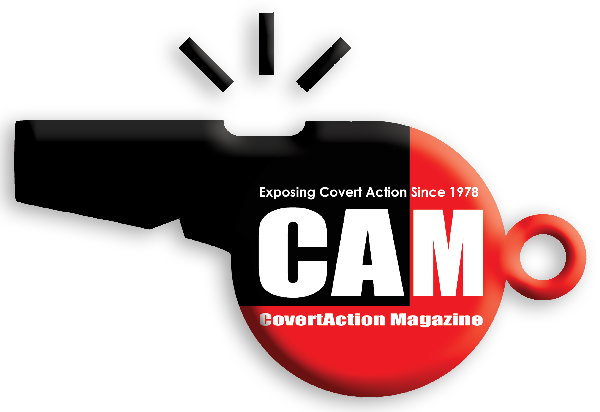


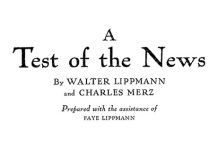


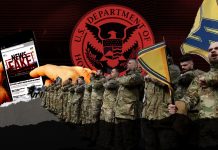
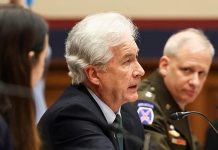
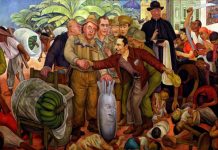
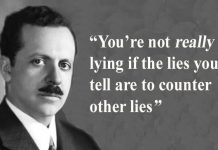
“Harvard history professor Fredrik Logevall was quoted in The New York Times stating his doubts that the new documents would “overturn our understanding of what happened on that terrible day in Dallas” where, as he believes, Lee Harvey Oswald, acting alone, killed JFK.”
Does he know these new documents show that Oswald worked for the CIA?
https://www.youtube.com/watch?v=y44_sZoC7no